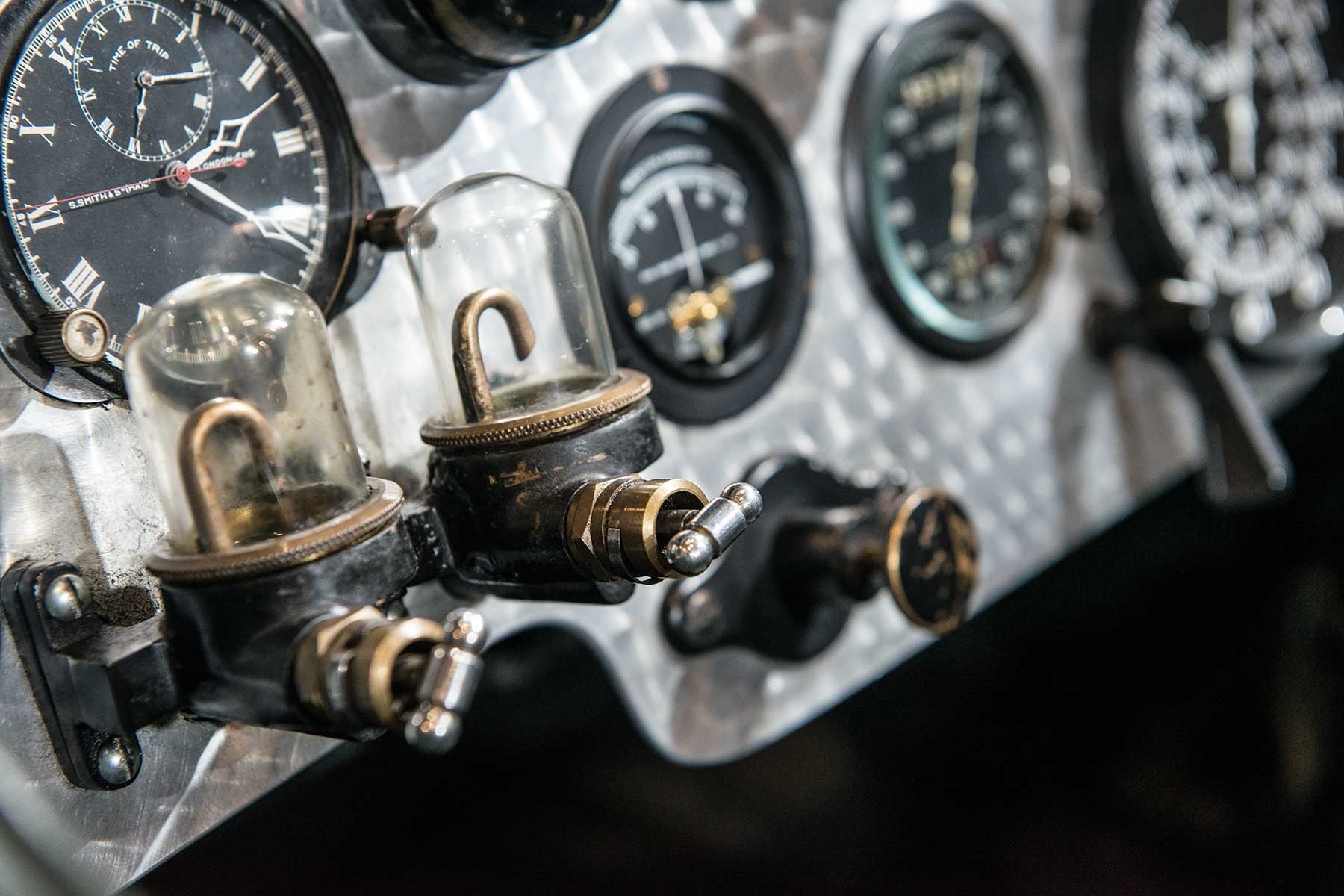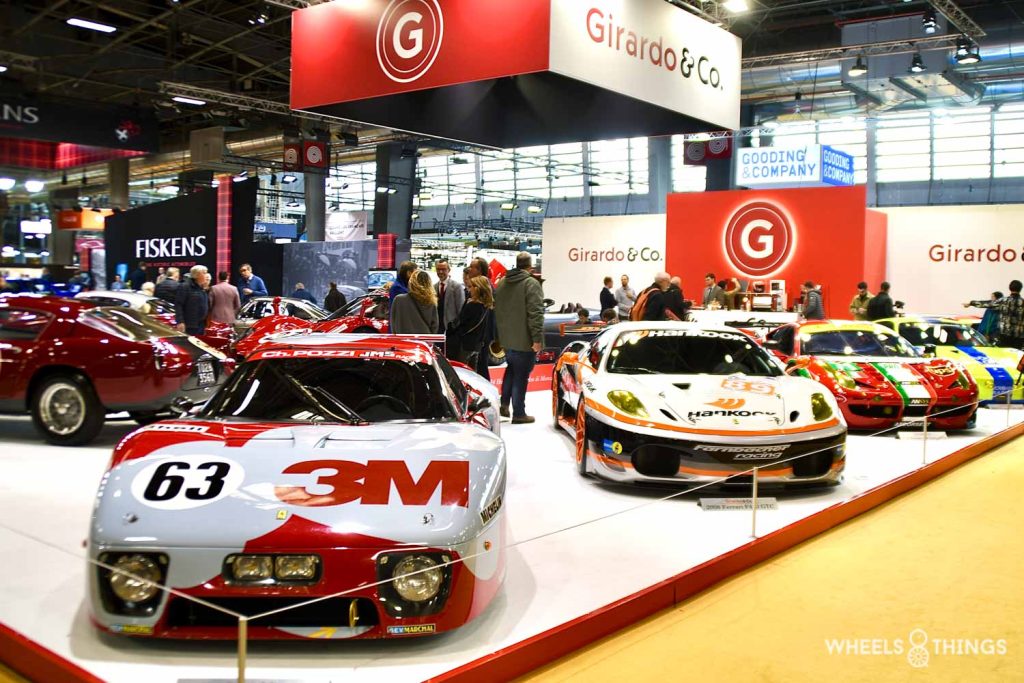
Paris and Rétromobile are, in early February, always a fixture on our calendar. In 2020, just before the big covid outbreak, we experienced another top edition. In 2021, the fair was first postponed and then cancelled. In 2022, there was another postponement to March but was back to being organised after two years.
But this edition just after the last covid flare-up was certainly the least in the last 20 years. Those who want to read our previous coverage can easily do so on our blog by typing “Retromobile” in the search bar. More than 40 articles will then appear for you. Definitely worthwhile.
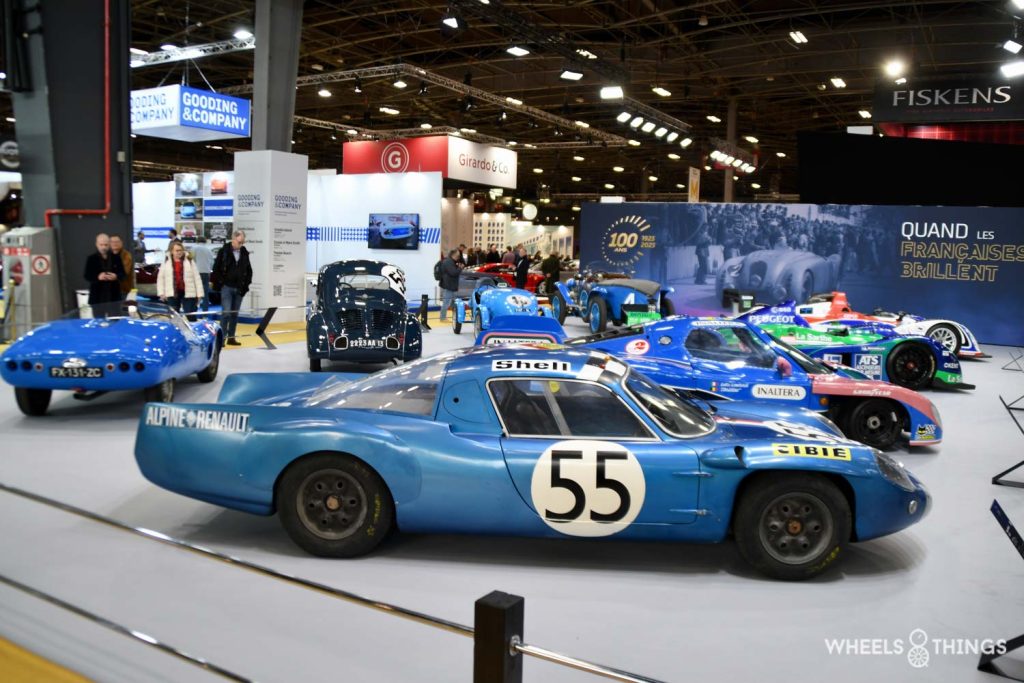
Appointment therefore for the 2023 edition which took place between 1 and 5 February. The information was slow in coming, but once the machine was running, it was already pretty clear: this would be another Rétromobile of a very high level. Several manufacturers and exhibitors who had skipped last year were present again. The show took place in the familiar halls 1, 2, 2 and 3, which can be used again after a thorough renovation.
CENTENAIRE DES 24 HEURES DU MANS
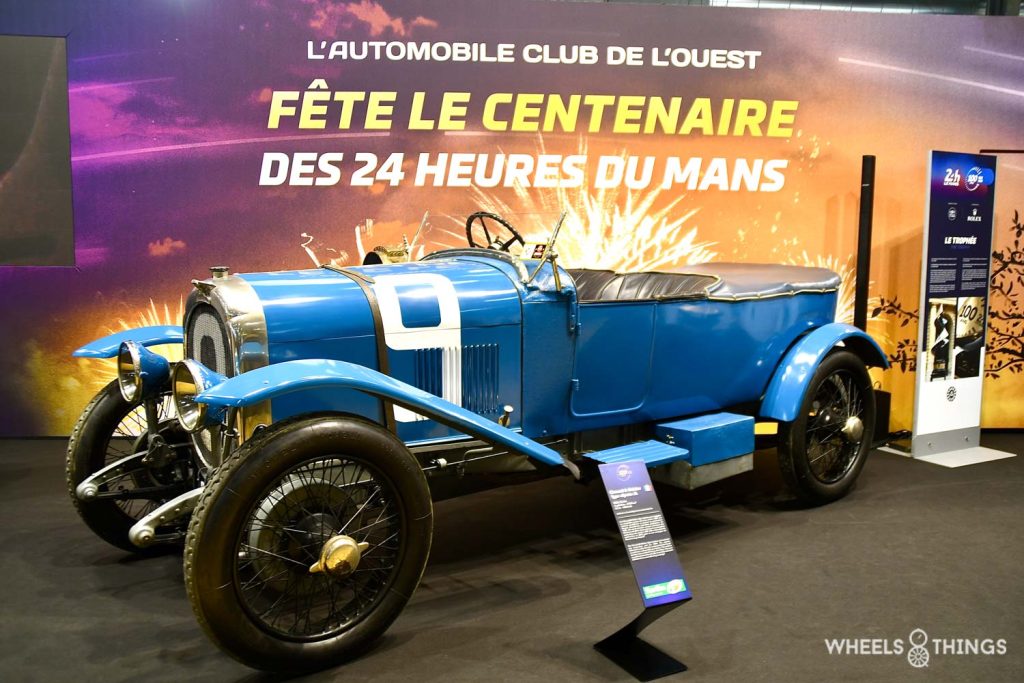
We start with Rétromobile’s main theme: the centenary of the 24 Hours of Le Mans. In 1923, a 24-hour race was held for the first time on the “Circuit de la Sarthe”. At the time, it was still entirely on public roads. Today, it is only “La ligne droite des Hunaudières” used by normal traffic. The festivities for this were already started the Monday evening before the fair in the heart of Paris. Nine-time Le Mans winner Tom Kristensen drove the trophy for this centenary, in the winning 1923 Chenard & Walker through the streets of the city of lights. The car was then placed, along with the trophy, on the Automobile Club de l’ Ouest’s magnificent stand.
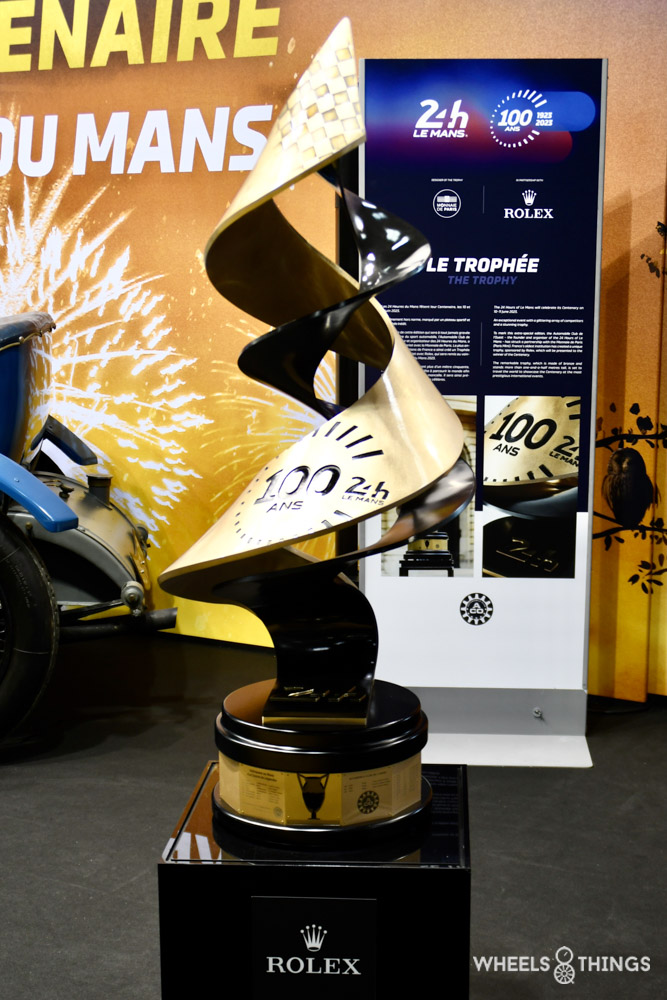
This trophy, over 1 metre high and entirely in bronze, was made by the National Mint of France. This unique piece is for the winner of the 2023 edition. Exceptionally, it may also be taken home permanently. Normally, you have to win three times for this first.
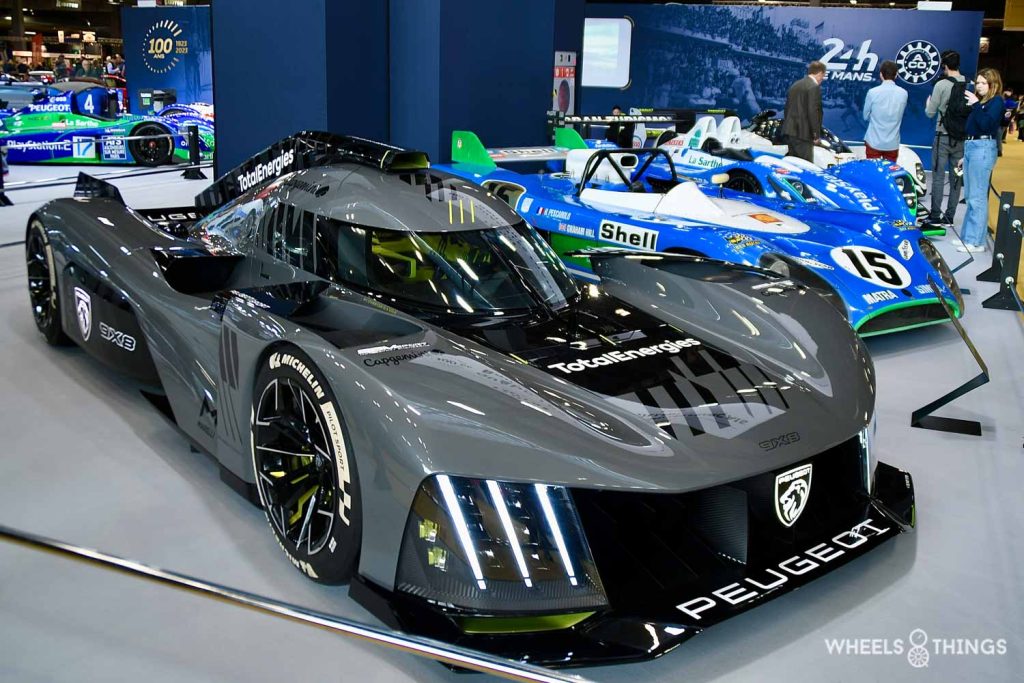
The ACO had clearly pulled out all the stops for the expo with its first theme: When the French shine at Le Mans. With 13 cars from French manufacturers on display, starting with the Lorraine-Dietrich B3-6 Sport of 1926 and up to the very latest Peugeot Hypercar 9 X 8 that will make its debut in the endurance race in June, it was a very successful expo.
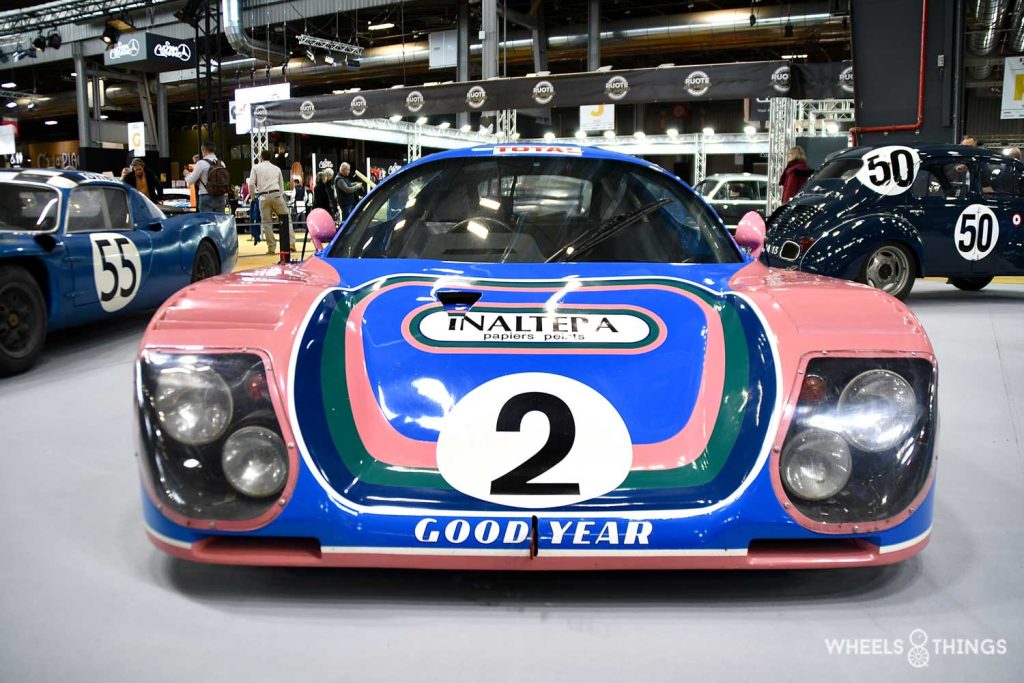
But other types such as a DB Panhard HBR4, a Simca Gordini Type Cinq, a Courage Pescarolo C60 and an Inaltera GTP were also real eye-catchers. Most of these cars are from the ACO’s own museum in Le Mans.
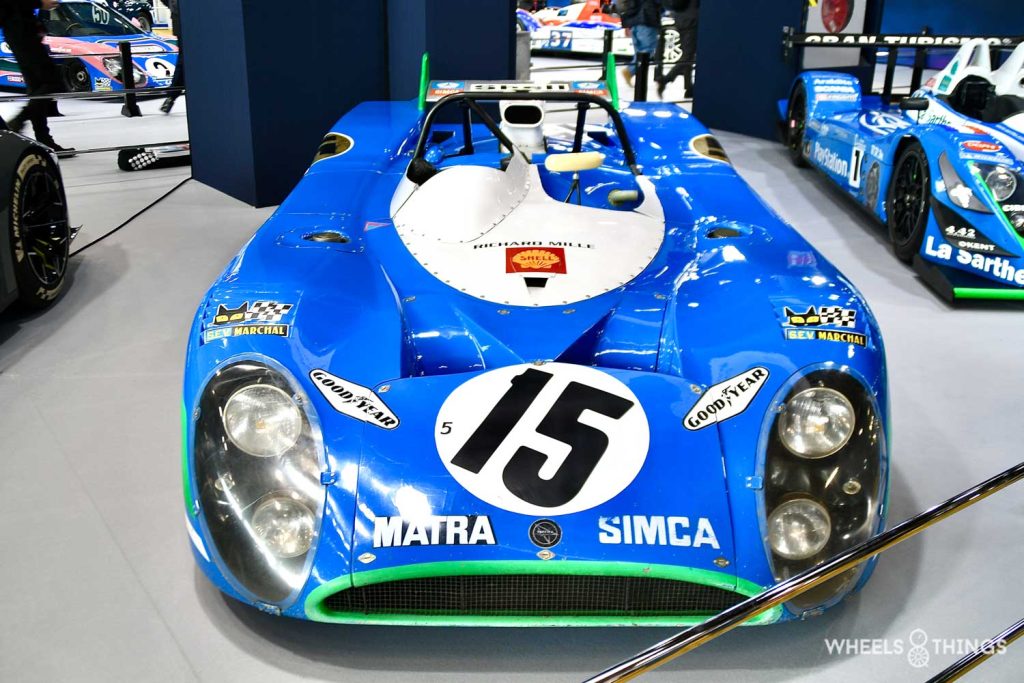
We close this expo with two winners: first, the Matra MS 670, which was unbeatable between 1972 and 1974 and delivered a real hat-trick with three consecutive victories.
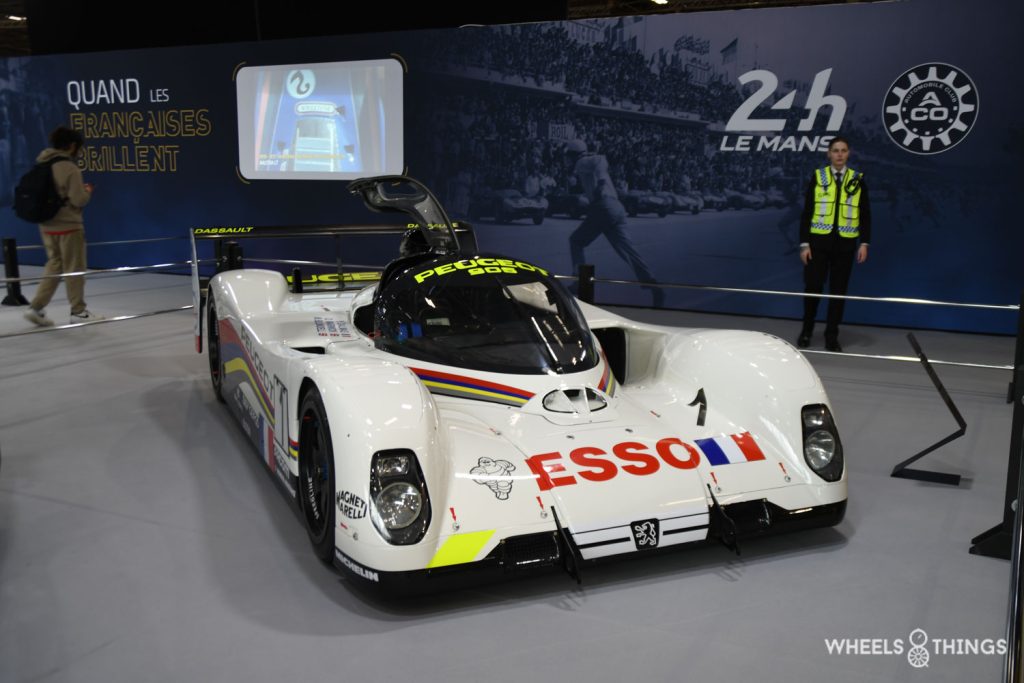
Peugeot’s colleagues under the leadership of Jean Todt, at the end of the Group C period, ensured two wins in 1992 and 1993 with the 905 Evo 1B.
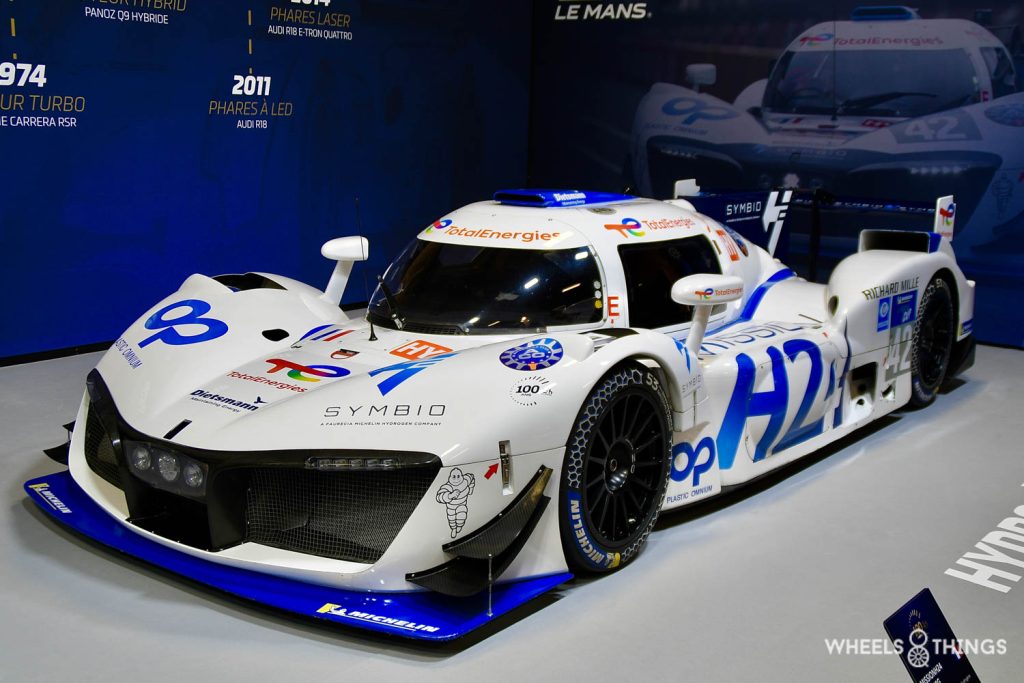
The ACO had a second stand in palace 3 with all the main novelties or innovations realised in this 100. The 24 Hours of Le Mans have always been a testing and development programme for the automotive industry. The regulations set up by the Automobile Club de l’ Ouest have certainly contributed to this. The next challenge is to have hydrogen-powered cars competing in the 24-hour race by 2026. And after a difficult start, this project has nevertheless evolved considerably in recent years with good results in the test programmes.
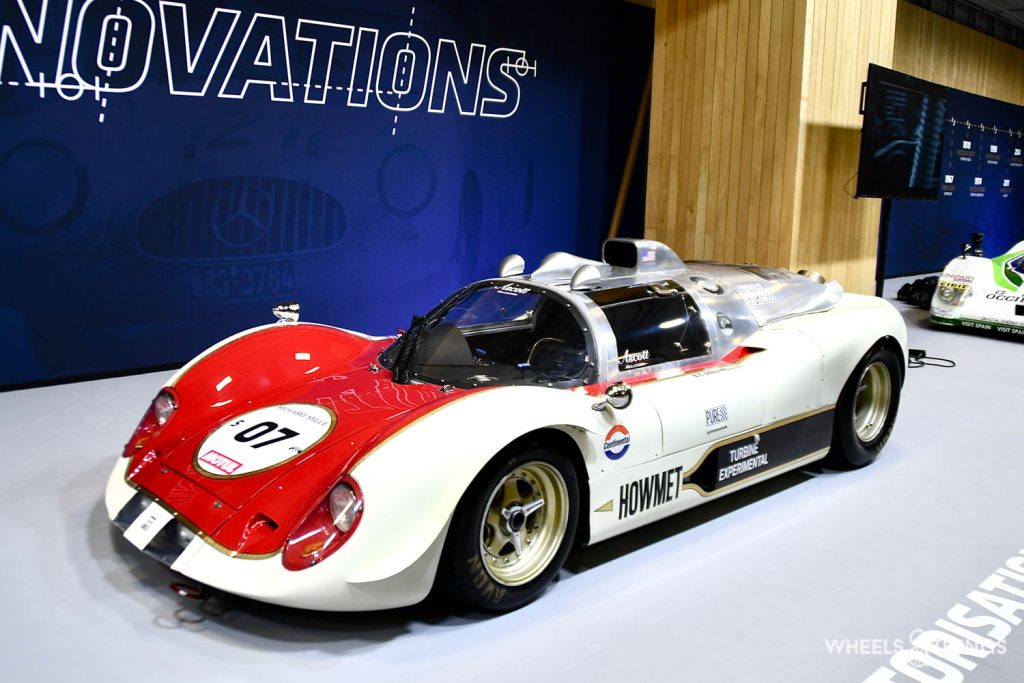
But even for an oddity, sometimes you have to be at Le Mans. This Howmet TX, equipped with a turbine helicopter engine started in the 1968 edition but did not make it to the finish line.
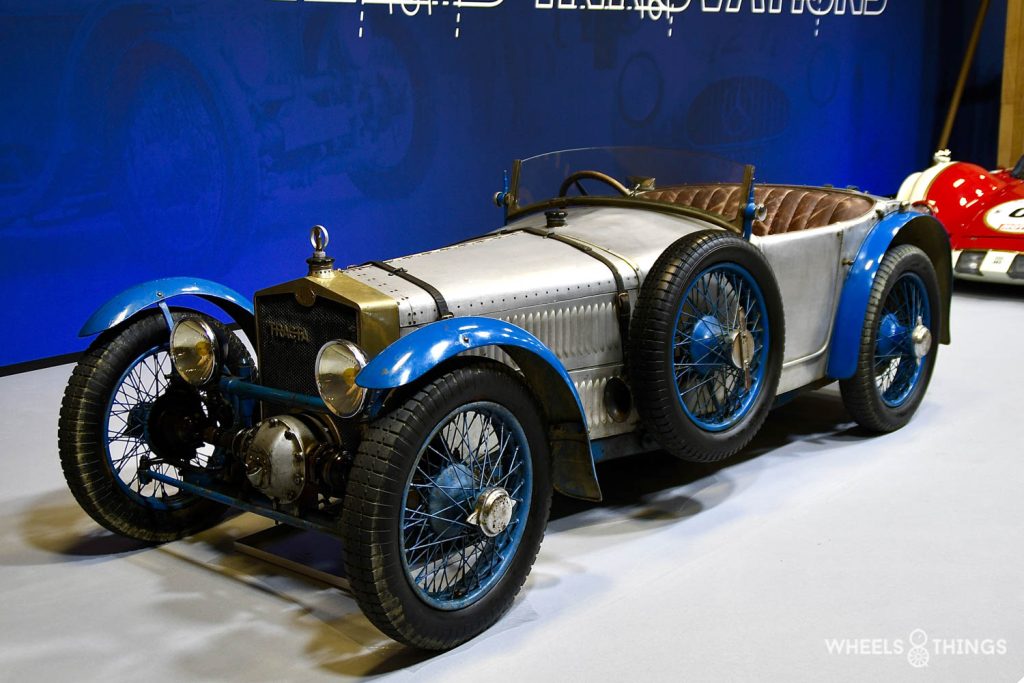
And believe it or not but in 1927 the first racing car with front-wheel traction started at Le Mans. This Tracta Type 4, notwithstanding a modest engine of only 40 HP, finished seventh overall.
The Lola T610 we saw recently at Chantilly Arts & Elégance was also on the ACO stand as an example of the evolution of aerodynamics. More about this event can be found here.
Besides ACO, several exhibitors had also adopted the Le Mans centenary theme for the realisation of their stands. And among them were real gems, most of which were simply for sale.
ART AND REVS
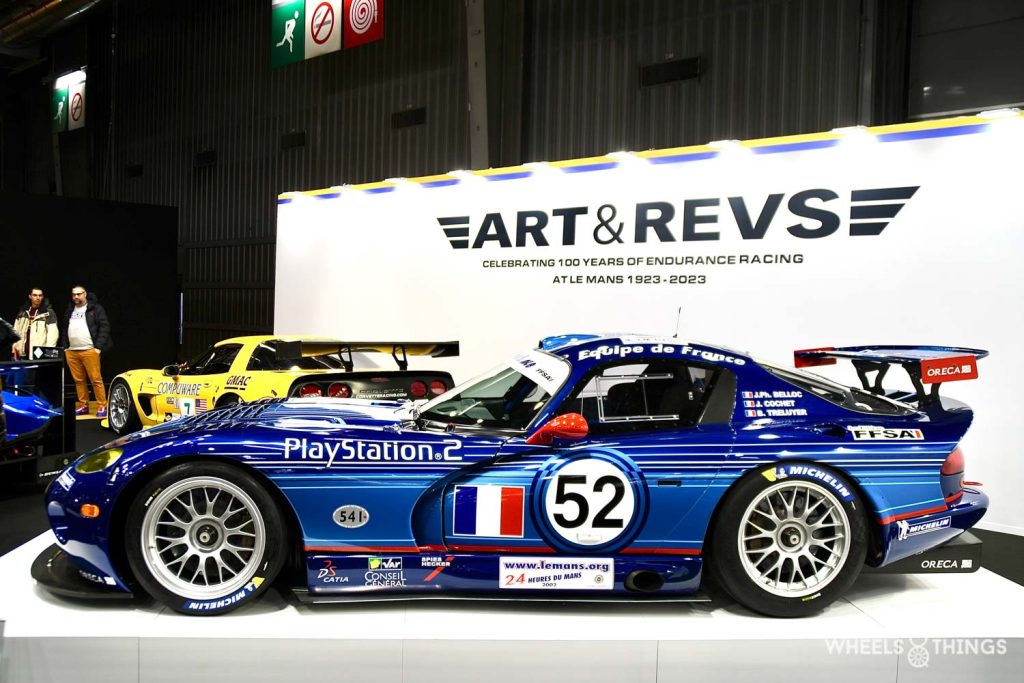
We found the most beautiful stand at Art & Revs with only prototypes and GT cars that had participated in the 24 hours of Le Mans.
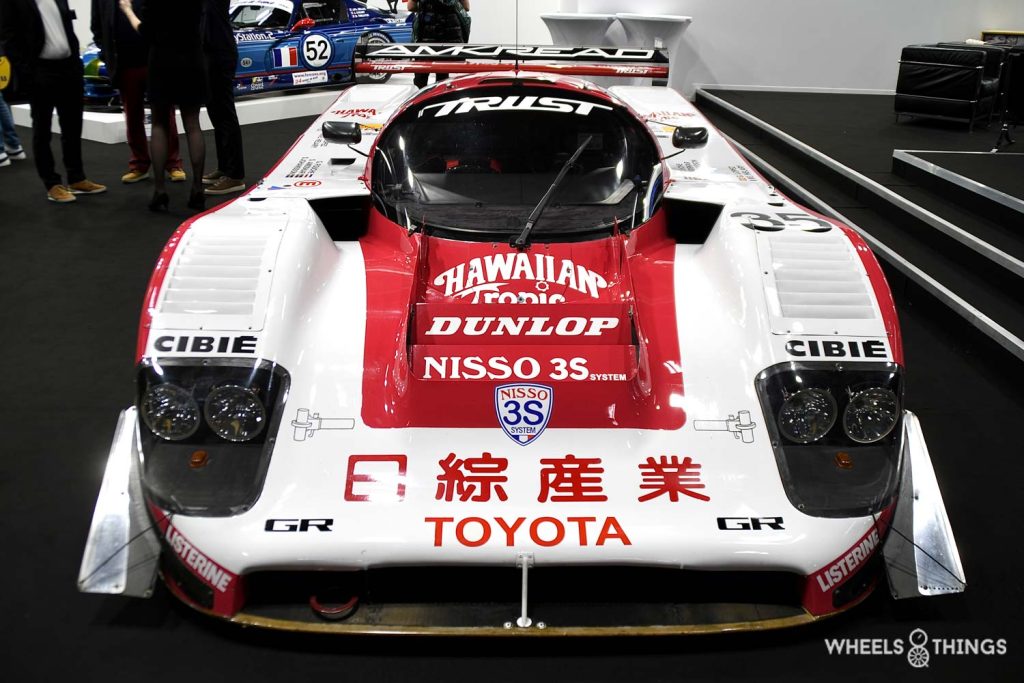
This Toyota 92C-V Group C with chassis number 001 competed three times in 92-93 and 94 and saw the finish line each time.
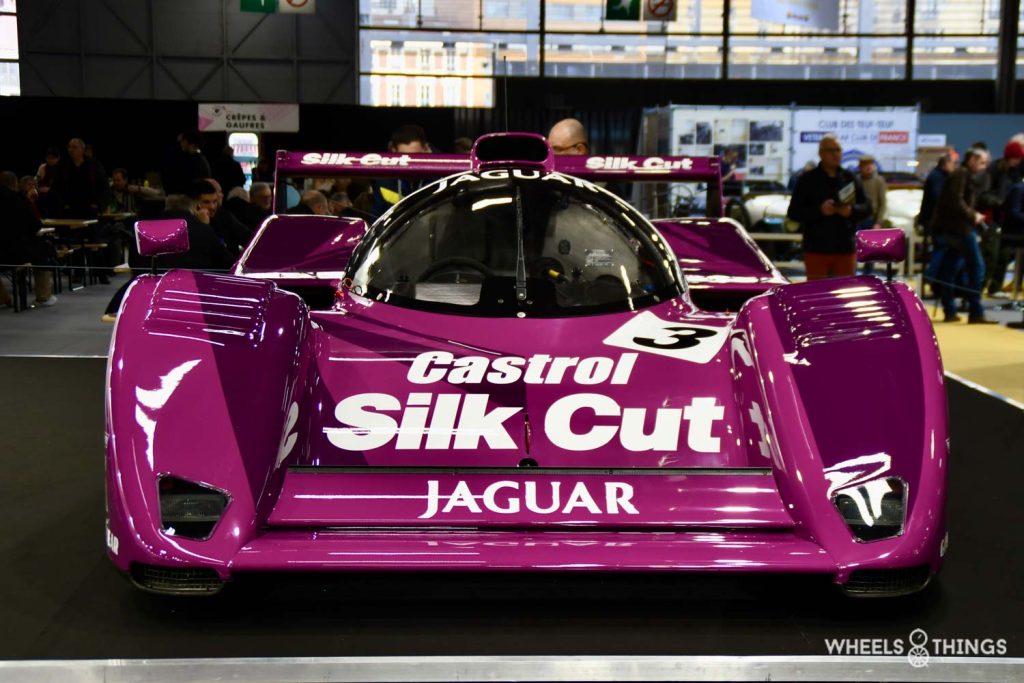
Totally different situation with this Silk Cut Jaguar XJR 14 that was only used in qualifying. For the race, the old XJR 12 was taken out again. You can read the story about this XJR 14 here.
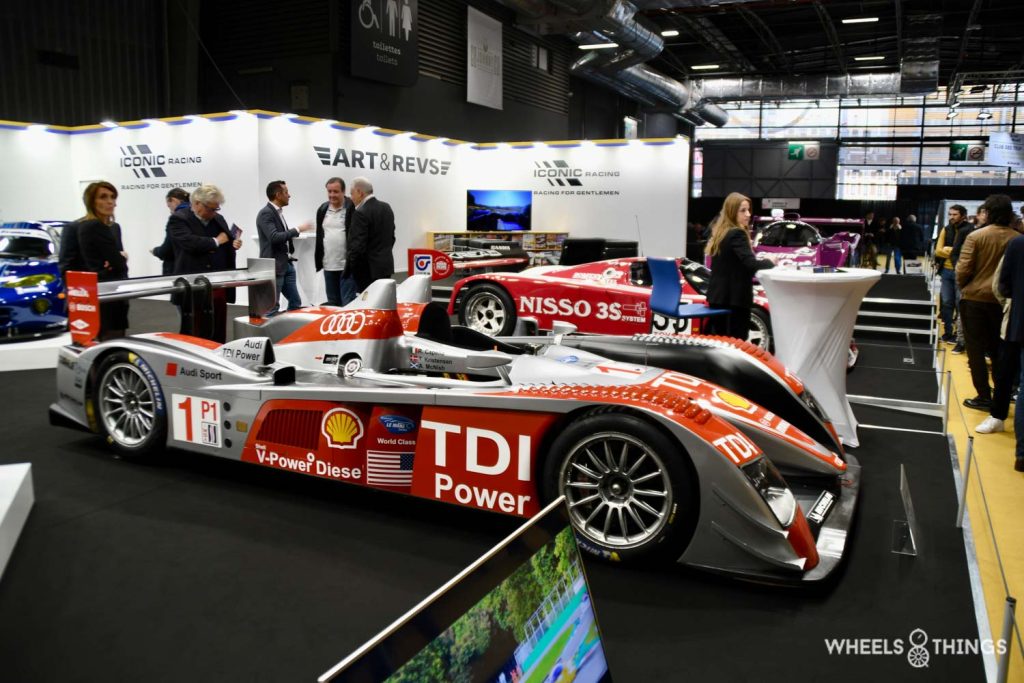
Those who wanted to do it a bit more economically could buy themselves another “old” Diesel with this 2007 Audi R 10 TDI. Audi was the first manufacturer to win Le Mans with a Diesel and even three times between 2006 and 2008. Audi also crossed the big pond with this R 10 TDI to use it to convince Americans to switch to their fuel-efficient Diesel cars. Its participation in the American Le Mans Series was successful but history has shown us how that turned out with their “Dieselgate”.
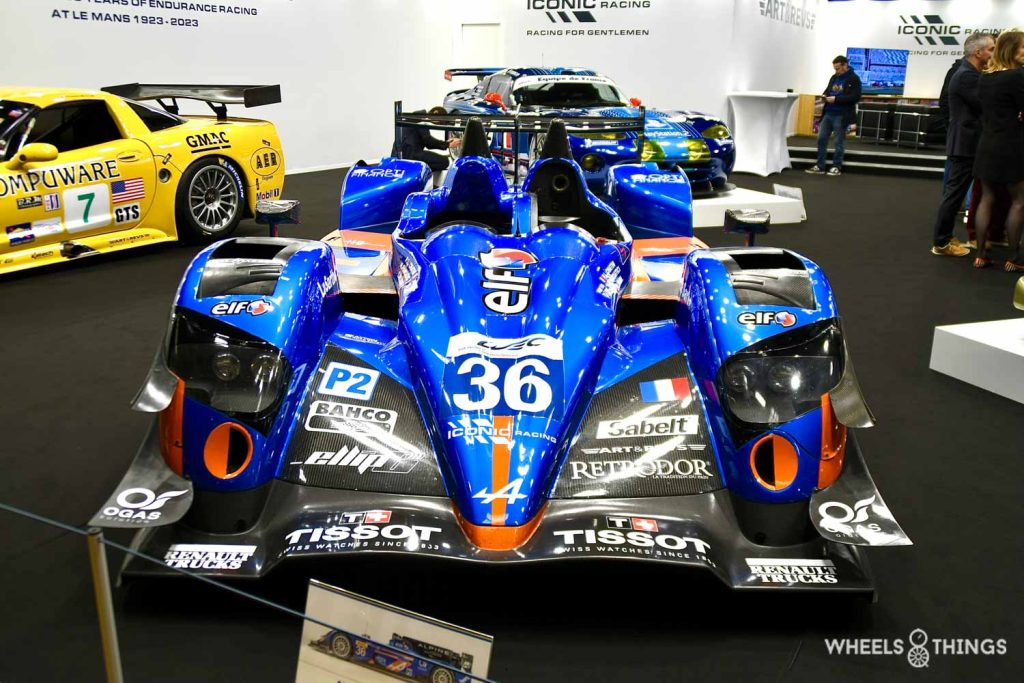
Those who preferred to look for something smaller could turn to this 2015 Alpine A 450b LMP2. Based on an Oreca chassis, the Signatech team made its own Alpine version on behalf of Renault. This A 450b won the WEC heat in China’s Shangai and the bodywork is still fully compliant as the car raced its last race in Bahrain. And surely such an open proto has its charms. Too bad the current regulations no longer allow them.
JMB CLASSIC
The colleagues at JMB had the same idea and surely presented some gems from motorsport history and the 24 Hours of Le Mans.
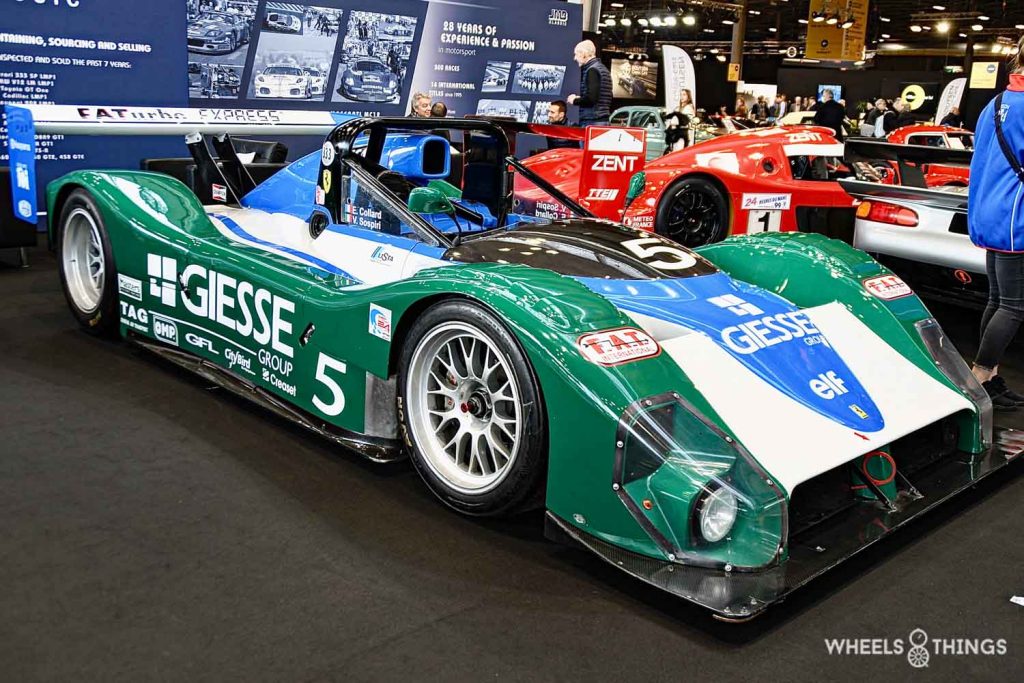
A Ferrari 333SP, chassis number 22, in its Giesse version took centre stage on the stand. This Ferrari competed in the 1998 24 Hours of Le Mans, albeit in Marlboro trim, but could not hold its own against competition from Porsche, Toyota, Mercedes and BMW. The beautiful Ferrari disappeared from the race halfway through with a faulty gearbox.
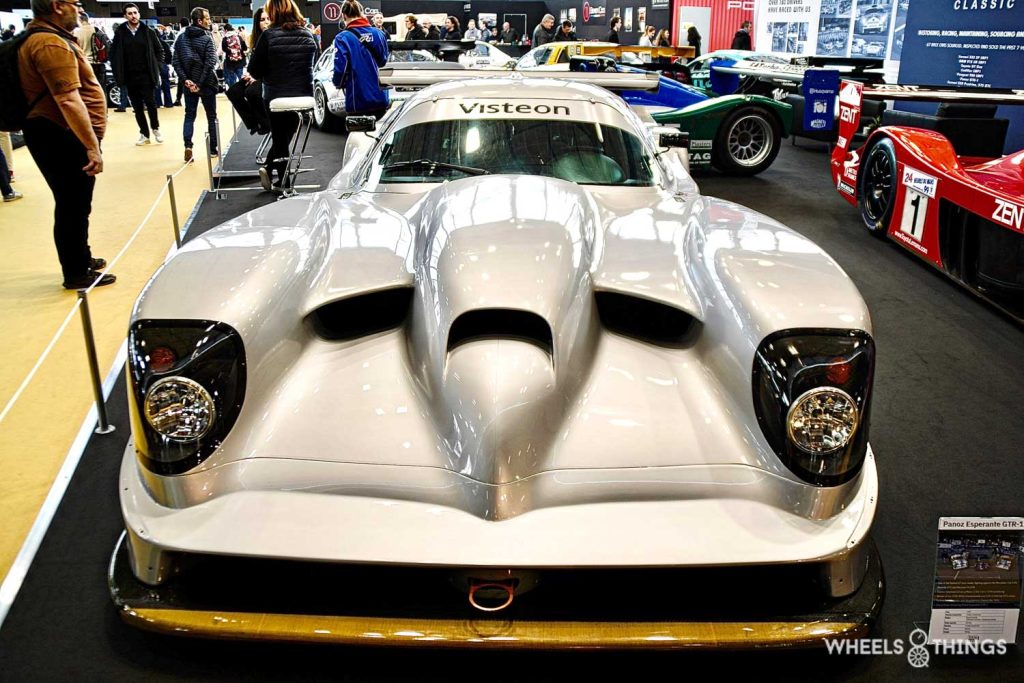
Another impressive machine was this Panoz Esperante GT1. Two of these silver monsters competed in the 1998 edition. Don Panoz, an American industrialist, had the great dream of competing in the 24 Hours of Le Mans. He would later be behind the creation of the ALMS or American Le Mans Series and the organisation of the “Petit Le Mans” race at the Road Atlanta circuit. He had the chassis built at the English Reynard and this was fitted with a fat Ford V8 engine that was placed up front and made an incredible sound from the side exhausts. This silver Esperante, with David Brabham, Jamie Davies and Andy Wallace at the wheel, achieved seventh place overall. Its nickname “Batmobile” was certainly not unjustified.
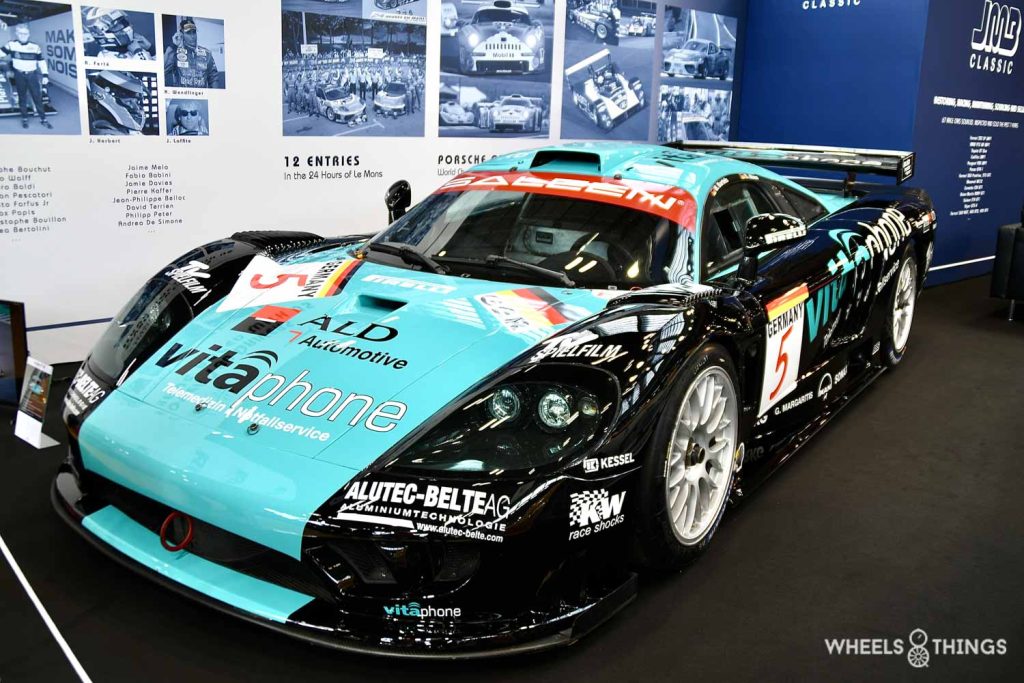
Another maverick is this Saleen S 7 R from the FIA GT Championship. Notwithstanding Saleen is an American brand, these racing versions were made in England by Ray Mallock’s company. This Vitaphone version did not participate in the 24 hours of Le Mans but did participate in the 24 hours of Spa and the FIA GT Championship.
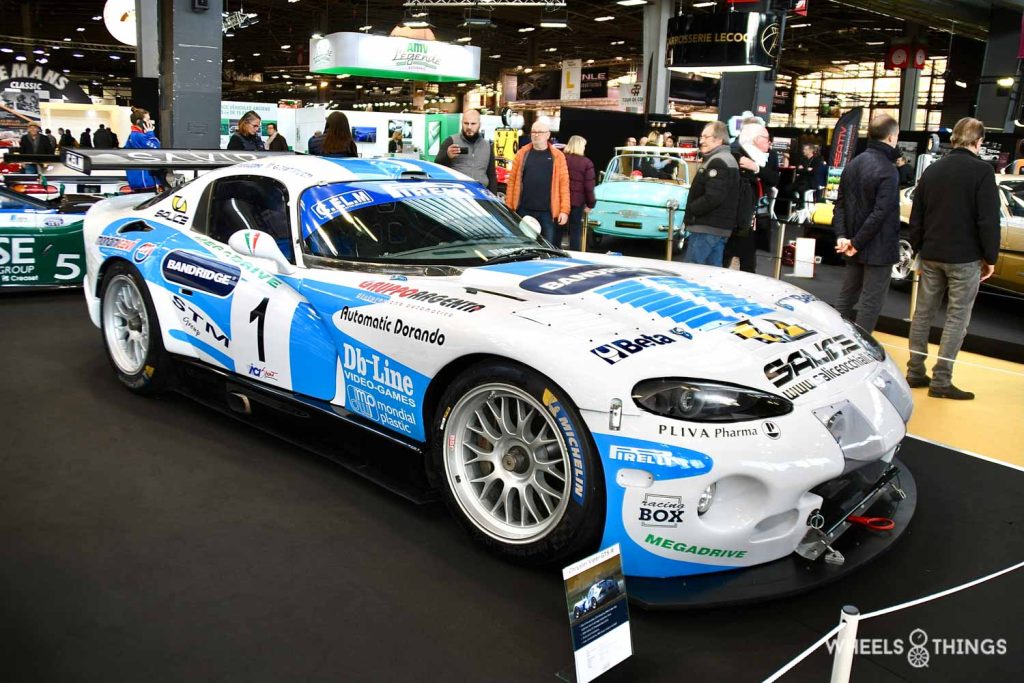
The Chrysler Viper GTS also fits perfectly into this series. French company Oreca turned this American “Muscle Car” into a real racing machine. It built 52 of these GTS-R race cars and took overall victory in the 1999 Daytona 24 Hours. As a factory team, Oreca also took three GT wins in the 24 hours of Le Mans. The Viper was also offered for sale to private teams and France’s Larbre was able to win the 24 hours of Francorchamps twice with it. Even the Nordschleife was no problem for this fat American: the Zakspeed team went home with victory in the 24 hours of the Nürburgring three times. The Viper was very successful with a ratio of 163 wins out of 262 starts.
ASCOTTCOLLECTION
Ascottcollection had brought along this American Riley & Scott. This MK IIIC LM 900 competed in the 24 hours of Le Mans in 2003. Our compatriot Mark Goossens was one of the drivers. He qualified this American with a time of 3.37.476 in seventh place on the grid. This was only two seconds slower than the Audi R8 which, in those years anyway, was the benchmark. Unfortunately, they did not make it to the end with a break in the eight-cylinder engine.
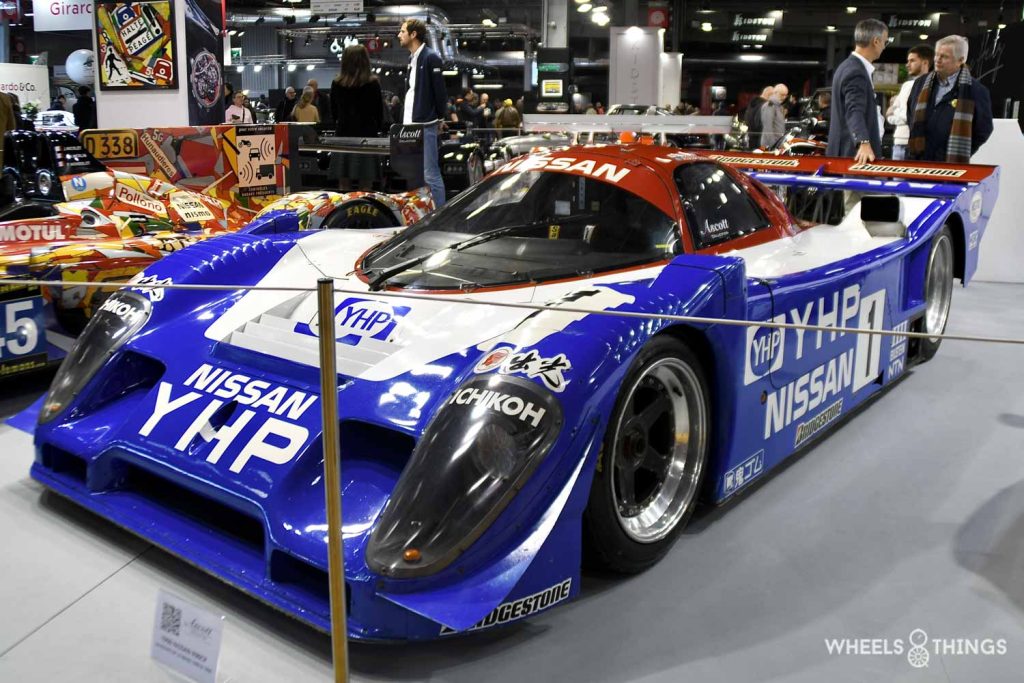
Nissan is the only Japanese marque that could not yet take a win at Le Mans. In the 80s, however, they were very active in achieving this. At Ascott, you could buy an R 90 CP that had competed in both the 1989 and 1990 editions. And in 1990, Nissan came to win. 5 units were entered. And speed was not an issue as Mark Blundell put his example on pole position with a time six seconds faster than Larrauri’s second Brun Porsche. Nissan also dominated the first race hours but technical problems caused four R 90s to throw in the towel. The sole survivor achieved fifth place. This defeat was also the immediate end of the Nissan Group C era at Le Mans.
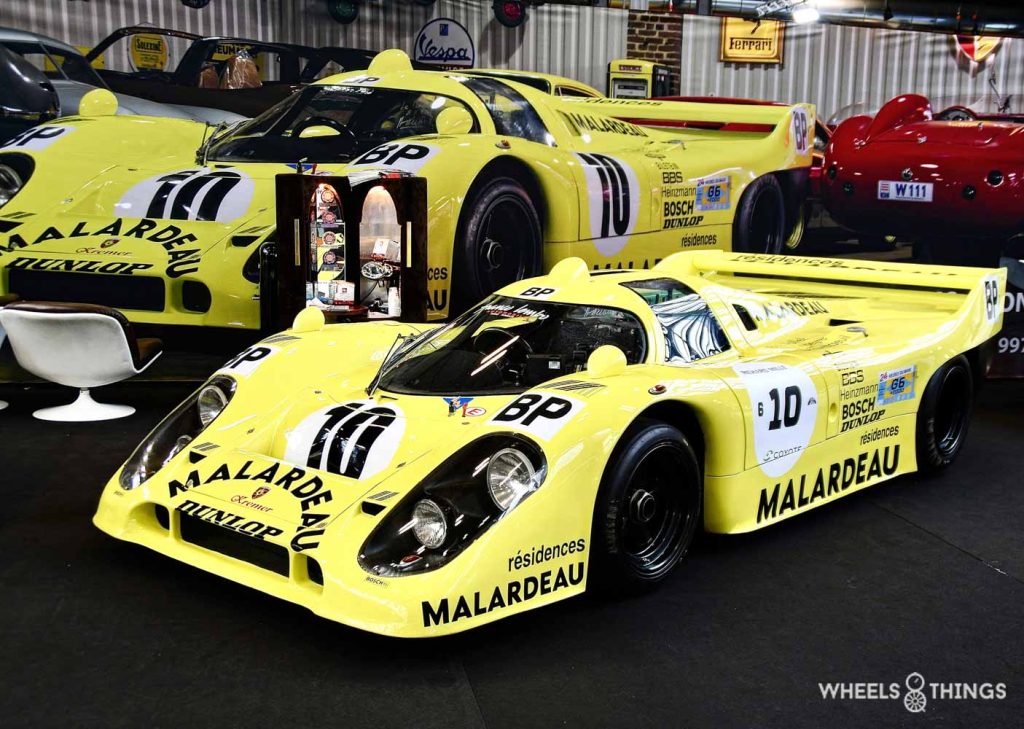
Le Mans cars were also found here and there at other dealerships, such as this Porsche 917 K 81 of the Kremer brothers. This homebuilder from Cologne took part in the 1981 24 Hours of Le Mans. It did not go very successfully. You can find the full story of it here.
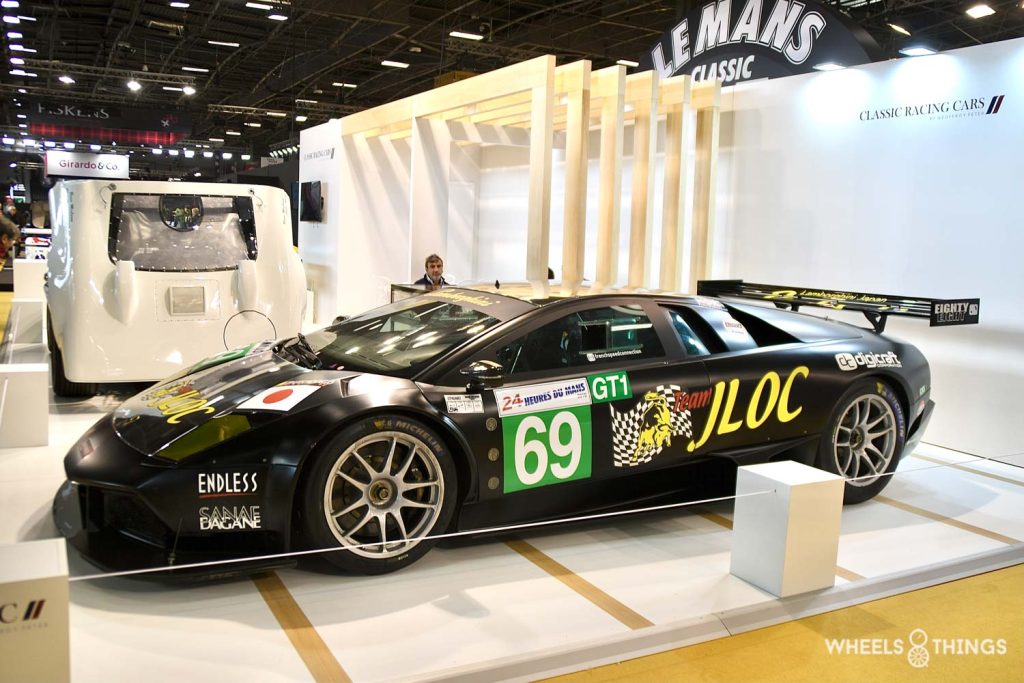
At Classic Racing Cars, we bumped into this Lamborghini Murciélage LP 670 R-SV of the JLOC team. This stands for Japanese Lamborghini Owner Club. These Japanese enthusiasts tried to finish the 24 hours four times. This succeeded, unfortunately for them, not a single time. This LP 670 R-SV made an attempt in 2010 but threw in the towel after 18 hours of racing. By then, the mighty Lambo had only completed 138 laps. A multitude of blowout tyres and transmission problems lay behind the decision to quit.
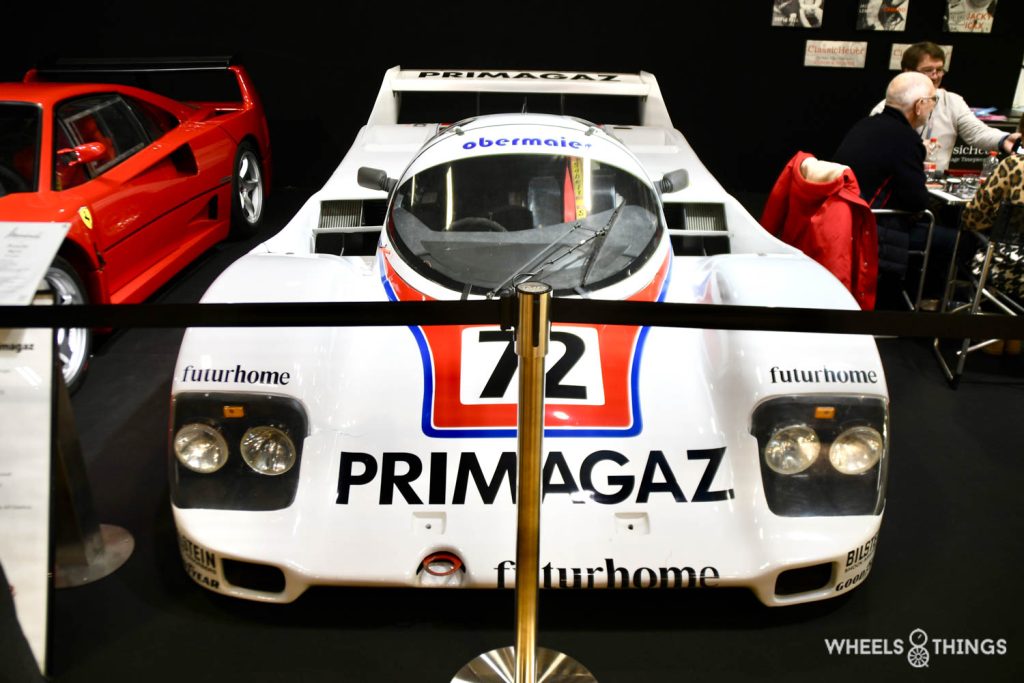
A somewhat sad set-up was the Porsche 962 C Obermaeier Racing in Primagaz livery that competed in the 24-hour race in the early 1990s. A pity though because this beautiful machine certainly deserved a more visible place.
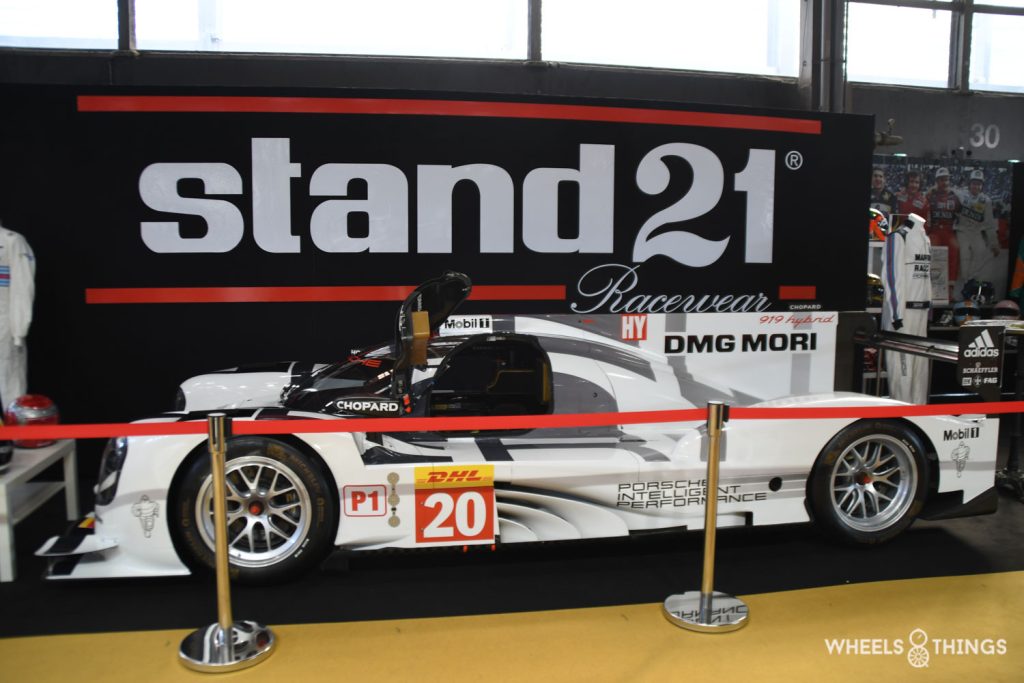
Another Porsche with the 919 hybrid of 2015. This three-time Le Mans winner was on the French racewear manufacturer’s stand: Stand 21.
RM SOTHEBY’S
Auction houses also joined in with the Le Mans theme.
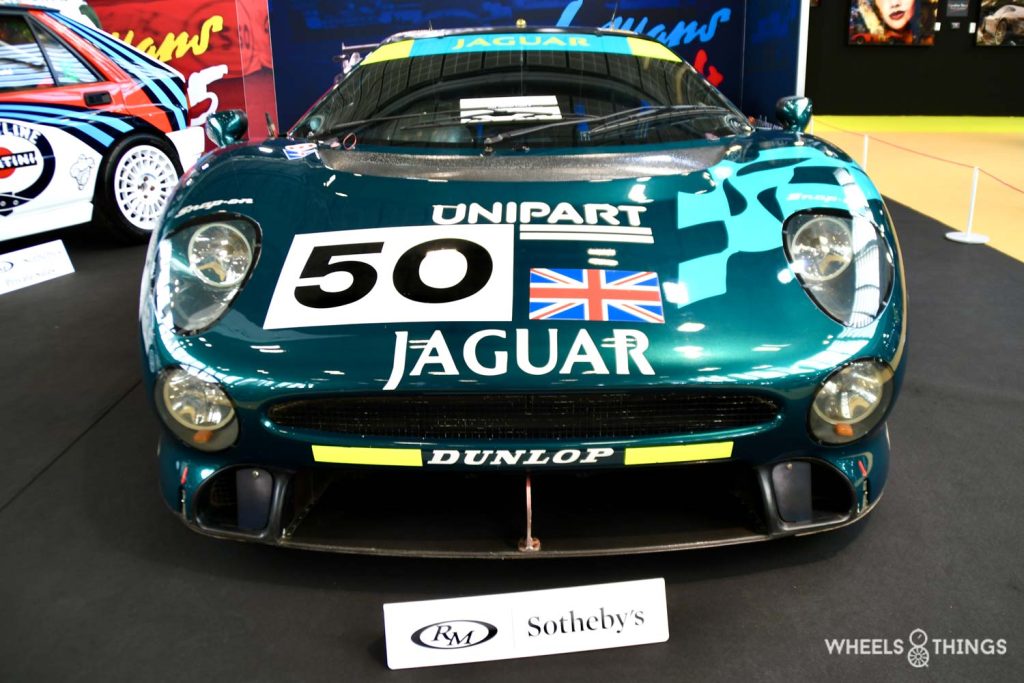
On RM Sotheby’s stand, we found this 1993 TWR Jaguar XJ 220 No 50. After the Group C period, Jaguar decided to enter their XJ 220, which could use some promotion, for the 24 Hours of Le Mans. Tom Walkinshaw will be in charge of the programme with his TWR. Three examples will be prepared. This one with start number 50 has chassis number 2 and was driven by David Coulthard ( later F1 pilot at Williams, Mclaren and Red Bull ), David Brabham and John Nielsen. Of the three cars entered, it is only start number 50 that makes it to the end. More to the point: John and both David’s take victory in the GT category. A month later, however, they are disqualified for non-compliance of the exhaust system.
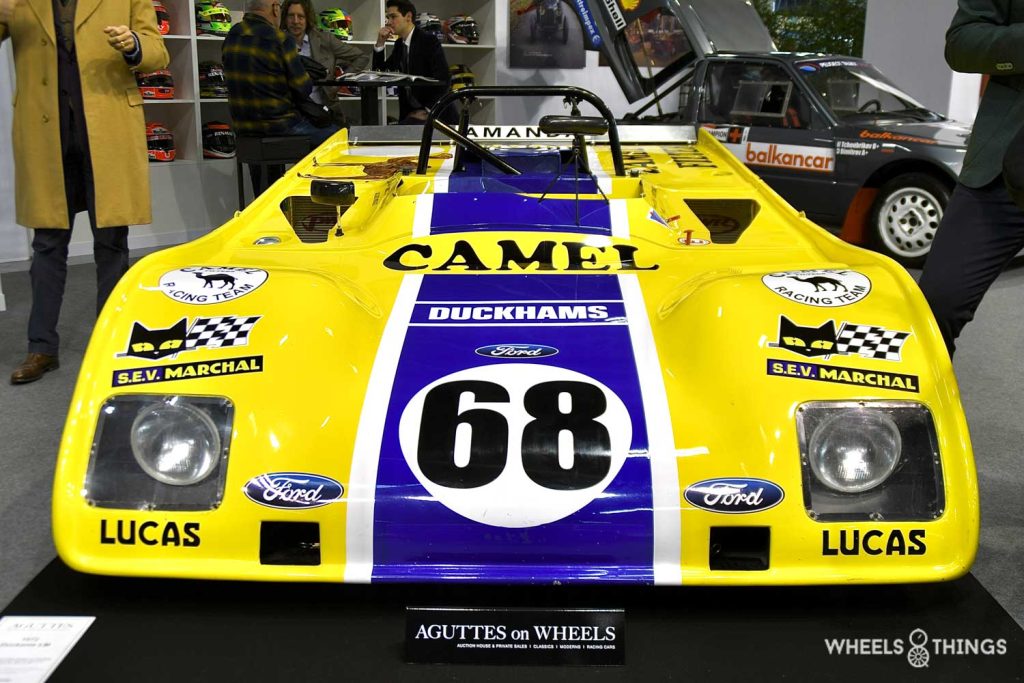
Auction house Aguttes had also brought two Le Mans thoroughbreds that will be auctioned later in the year. First up was a De Cadenet Duckhams LM. This proto ( a slightly smaller Ferrari 312 PB ) is one of the first designs, commissioned by Alain De Cadenet, from the great Gordon Murray. It is the original 1972 car. De Cadenet originally wanted to buy a Ferrari proto but Enzo refused and Matra wouldn’t sell him a car either so he built one himself. The car was ready just in time for the race and with little test experience, the team left for Le Mans. De Cadenet and co-driver Chris Craft drove a steady race and climbed to fourth place in the overall standings. A rain shower surprised Craft and the front bodywork was badly damaged after a collision with the crash barriers at Tertre Rouge. Craft was still able to reach the pit and the car was patched up as best it could be. After the repair, they were still able to finish 12th. Gordon Murray made a perfect copy of his first creation a while ago.
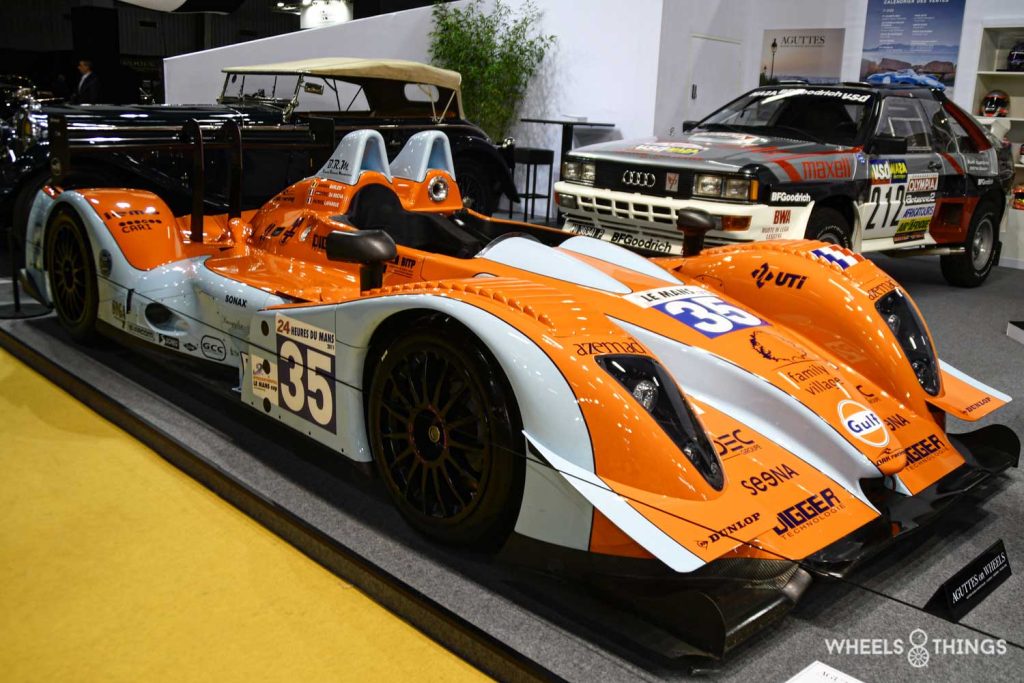
Slightly more recent is the Oak-Pescarolo Judd LMP 2. And yes a car with a Gulf decoration always remains a crowd pleaser, even this humble car from the 2011 24 Hours of Le Mans.
SUBER
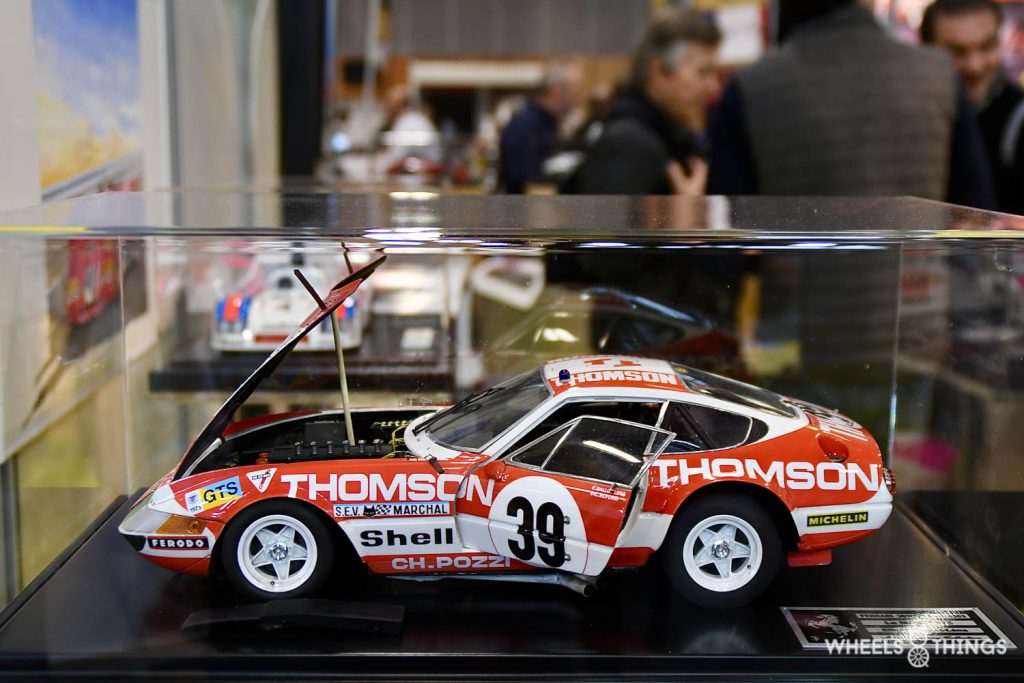
Also totally with the Le Mans theme was the company Suber, which makes artisan miniatures. This 1973 Thomson Pozzi Ferrari is a true masterpiece and almost real. This goes for all their creations, by the way.
PORSCHE 911
Another birthday boy is Porsche, which gets to blow out 75 candles this year. But this was not celebrated at Rétromobile. They did bring a birthday boy with the 911 which itself gets to blow out 60 candles. No one ever imagined at launch that this model would last 60 years. From the 901 of 1963 to today’s 911 GT2 or GT3 RS……it has certainly been a long road. The 901 designation soon had to give way to 911 after Peugeot’s legal action against Porsche because Peugeot then had the rights to the three-digit designations with a zero in the middle.
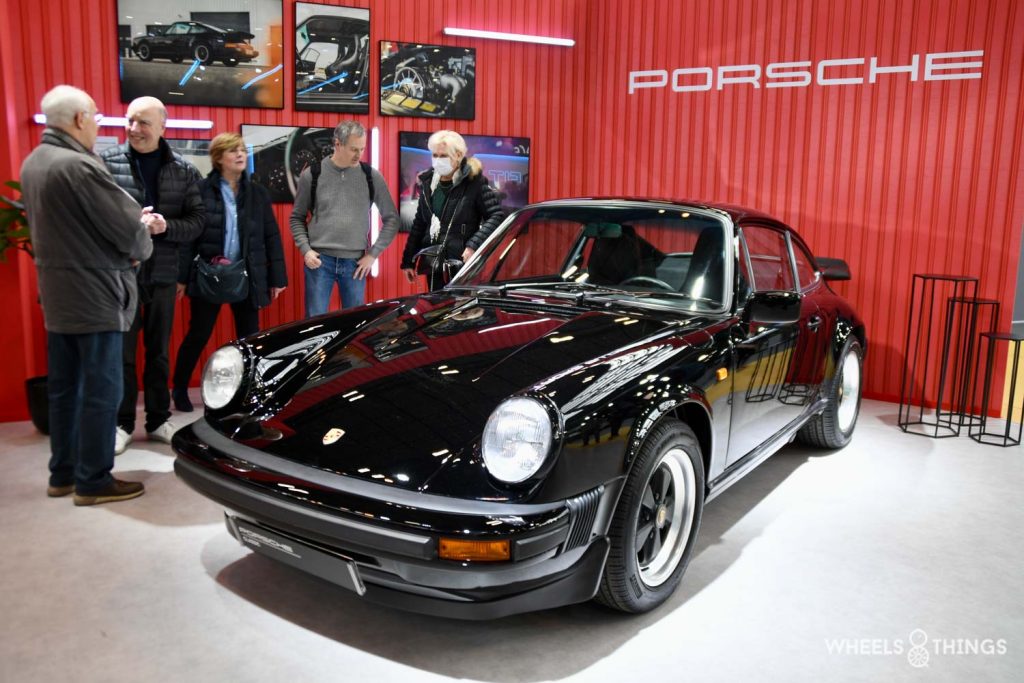
Several models from this period, such as the 911 RS Carrera and the first 911 turbo, were beautifully displayed on the Porsche stand built in collaboration with Porsche France.
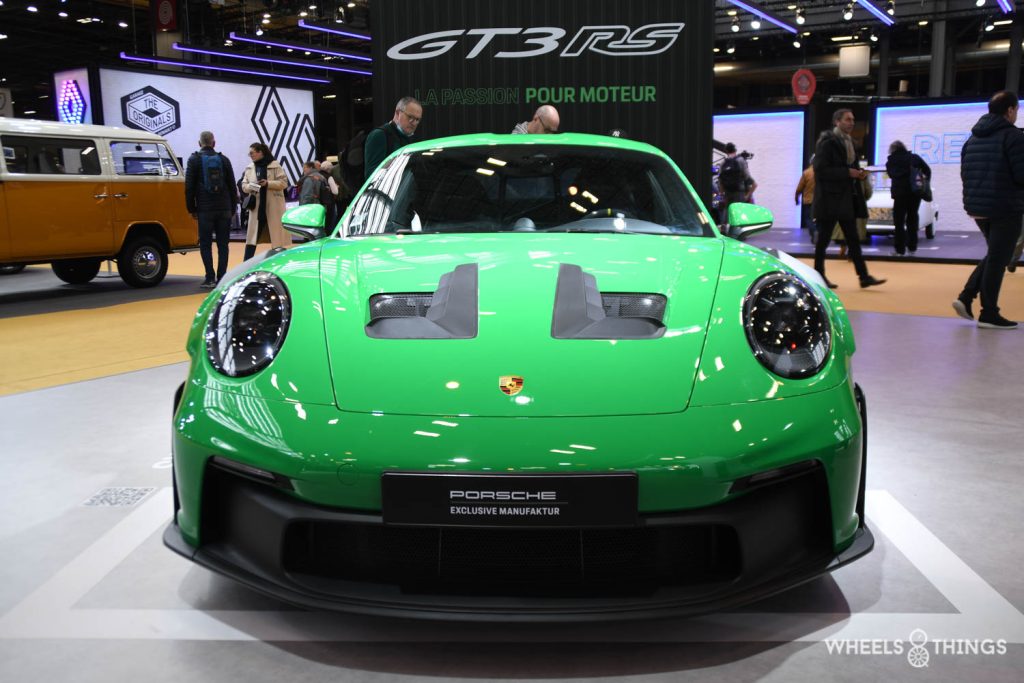
The very latest version of the 911 GT3 RS, with a DRS rear wing, was also in Paris.
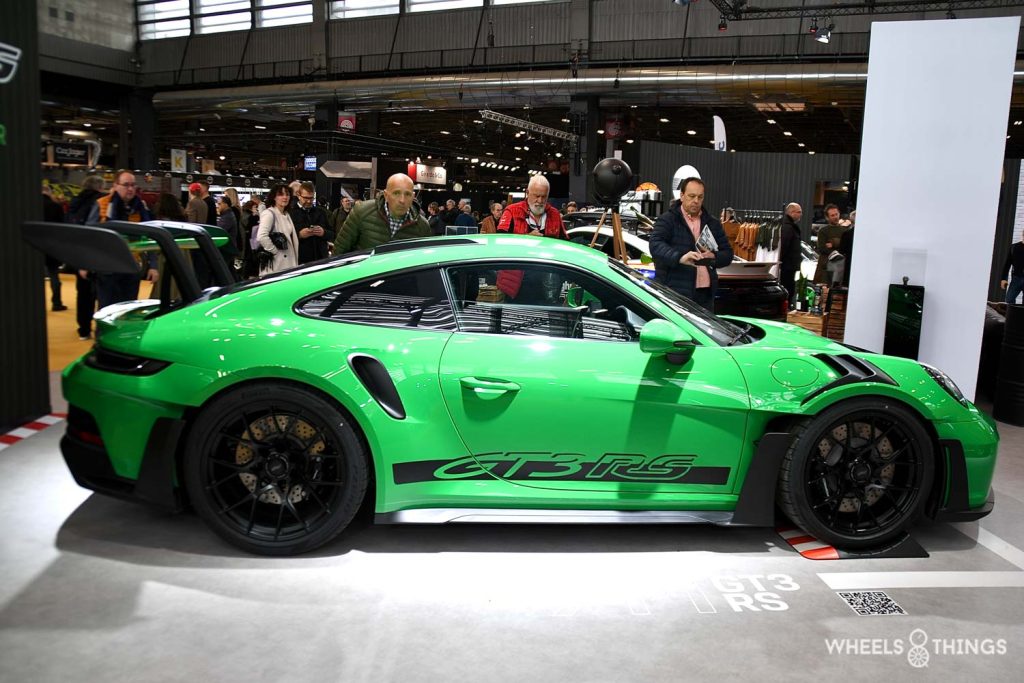
And for those who want to play in the sand or snow, there was the also new, limited to 2,500 units of 473 HP, 911 Dakar that comes in a genuine rally-raid version including roof racks with extra petrol cans. Perhaps a little too much new material but we want to pass it along anyway.
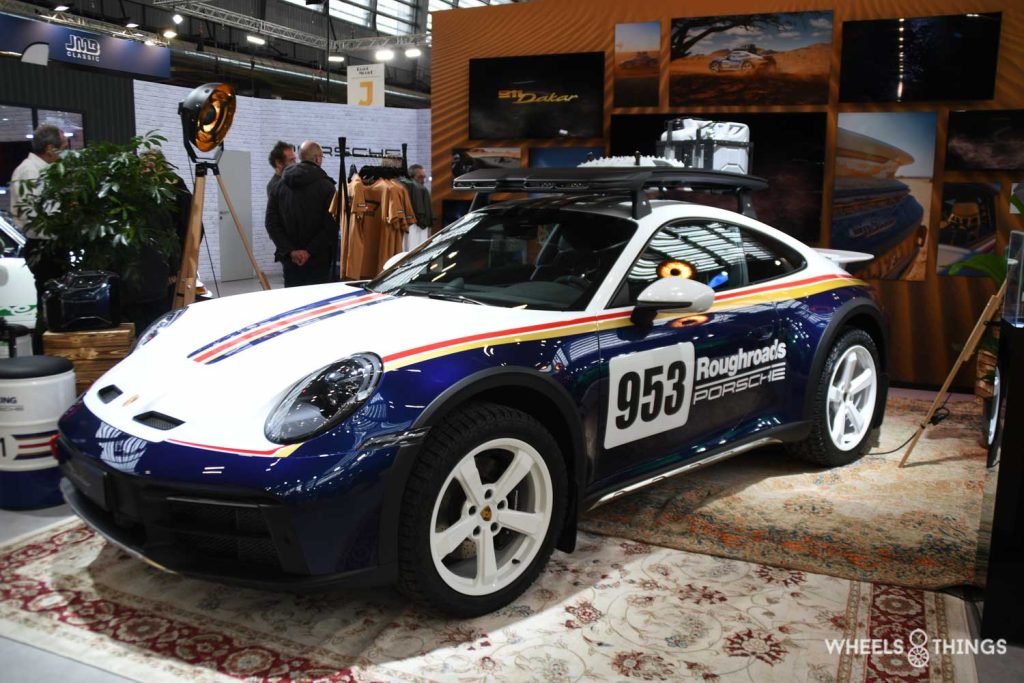
In recent years, we have seen more and more constructors taking advantage of Rétromobile to bring their latest models to Rétromobile to exhibit them together with their forefathers.
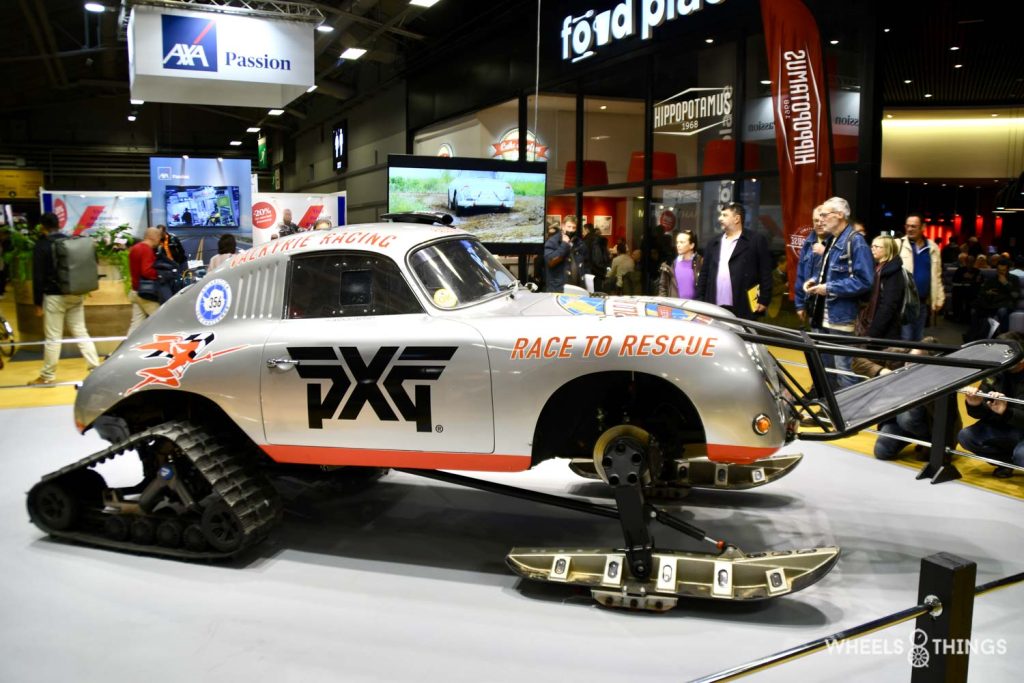
Even more Porsche with a very special case: the Valkyrie Porsche 356 that had participated in a rally in Antarctica with a tracked rear drive. This rally was part of a challenge of one rally per continent covering over 32,000 kilometres and raising over $600,000 for charity.
VOLKSWAGEN TRANSPORTER OR COMBI
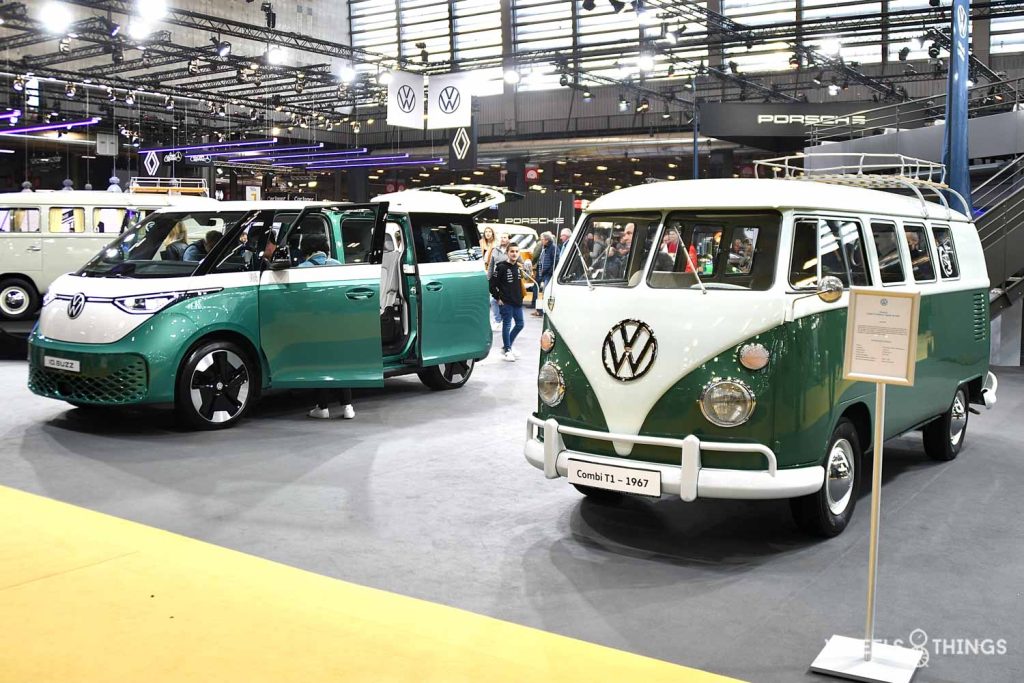
Volkswagen used Rétromobile to coincide with the launch of its new ID. Buzz to highlight all its predecessors, starting with the “Bulli”. And VW vans came in countless versions. Whether you needed to transport passengers or goods: VW always offered the right variant.
CITROEN ASTERIX CHARIOT CONCEPT
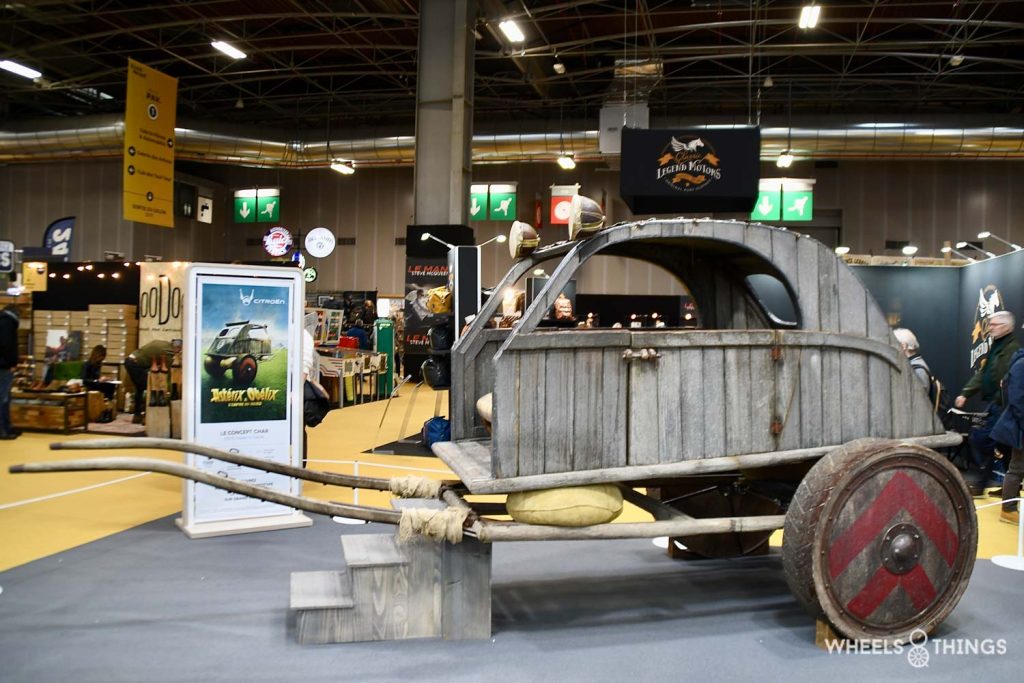
Something completely different with this Citroën Asterix Chariot. Freely translated, chariot is a cart. This concept is in the shape of a Citroën 2 CV and was specially made by Citroën’s design department for the new Asterix film L’ Empire du Milieu or The Middle Kingdom. And whether with or without a Citroën, Asterix & Obelix are always the victors at the end of the film.
RENAULT CLASSIC
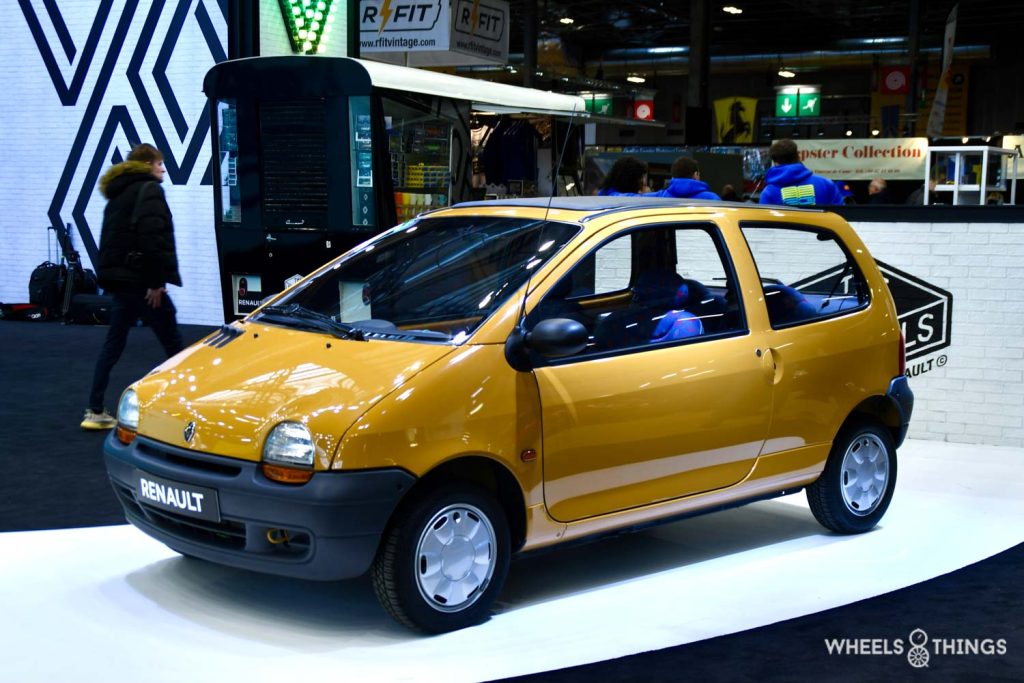
Renault Classic’s stand this year was a little less impressive compared to previous editions. Thirty years of Renault Twingo was the main theme alongside their Retrofit programme. In collaboration with R-Fit, owners of the Renault 4, 5 and first-generation Twingos can replace their fuel engine with the electric one with a 48 kilowatt motor.
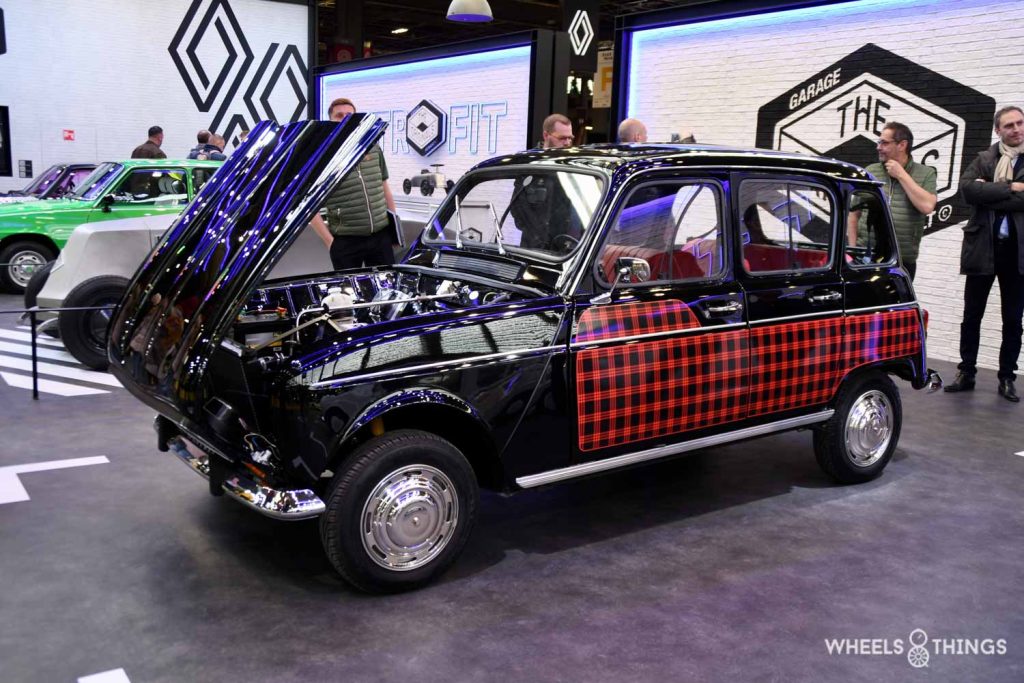
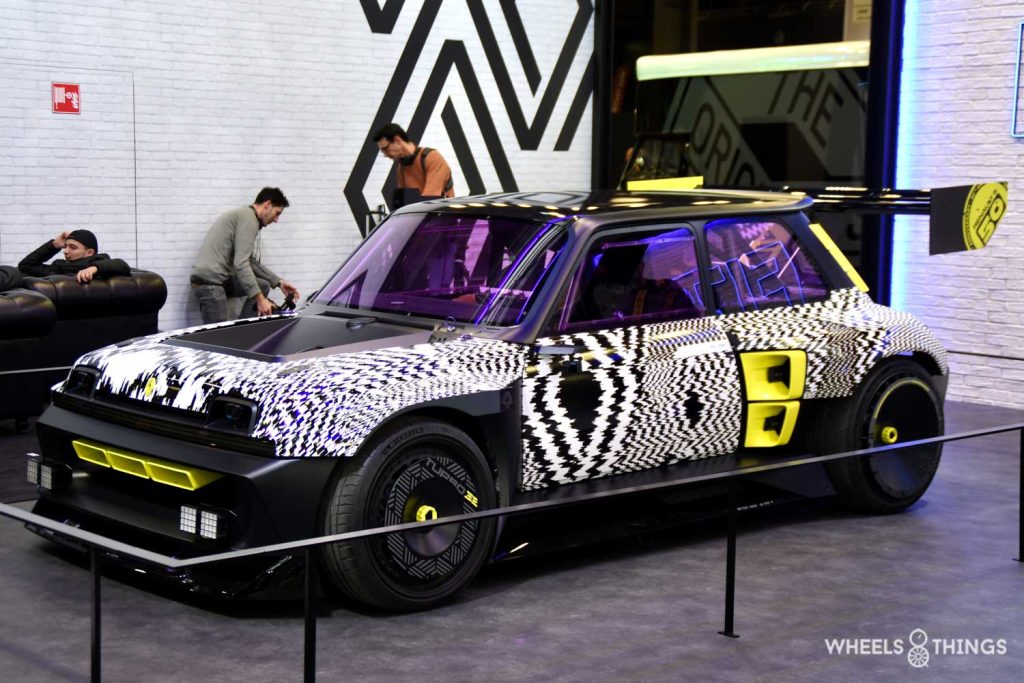
To highlight this collaboration, Renault had also brought its recent electrified reincarnation of its iconic R5 Turbo to Rétromobile.
STELLANTIS
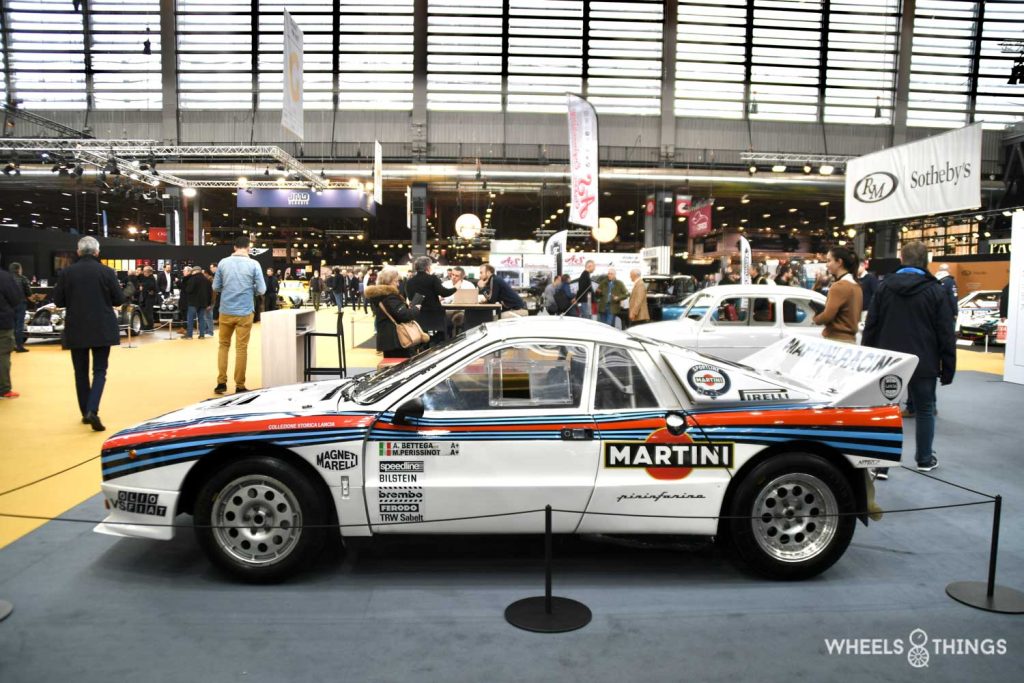
After several years of absence, Peugeot and Citroën were also back in attendance. Where they used to do this on their own it was now under the wings of parent company Stellantis, who as an added eye-catcher, had also brought their recent Italian connection with Alfa Romeo, Lancia and Abarth.
CITROËN
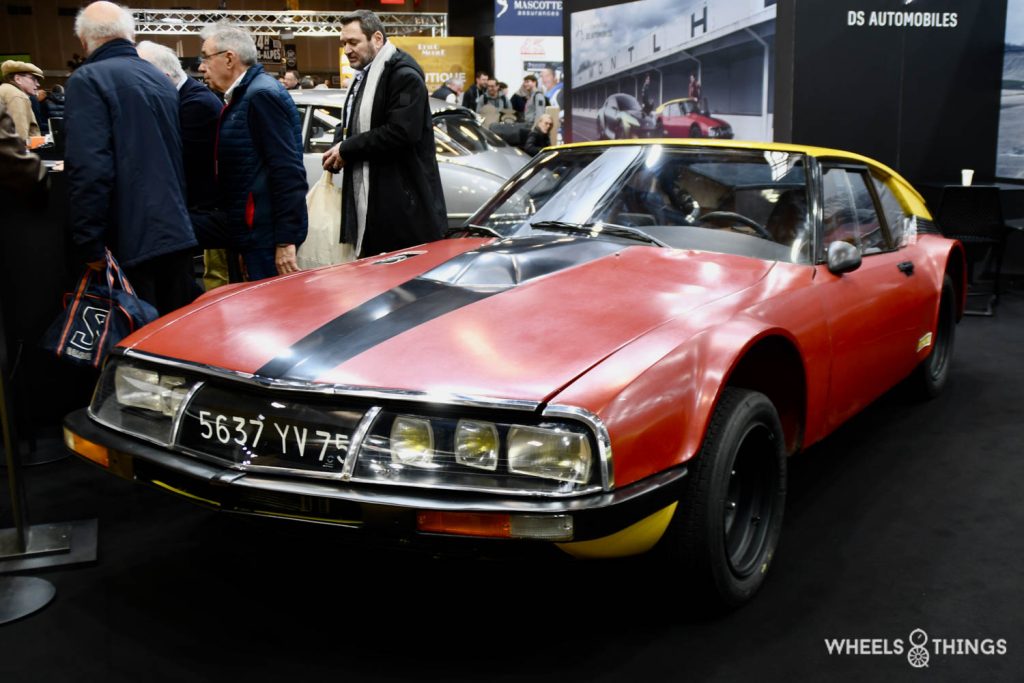
At Citroën, we found a prototype of their SM. This had the designation “Proto Michelin” and mainly served to test the Michelin tyres in combination with the suspension. This SM was shorter, lower and wider than the series model;
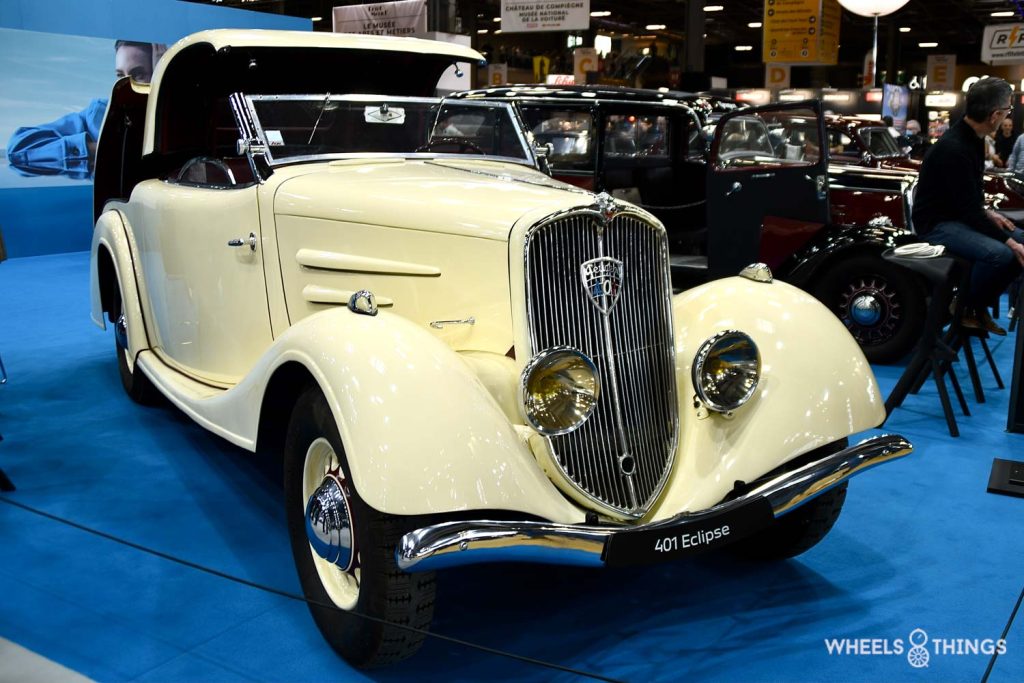
Sister brand Peugeot in turn presented a pre-war 401 Eclipse type cabriolet with a metal roof that disappeared into the boot even then.
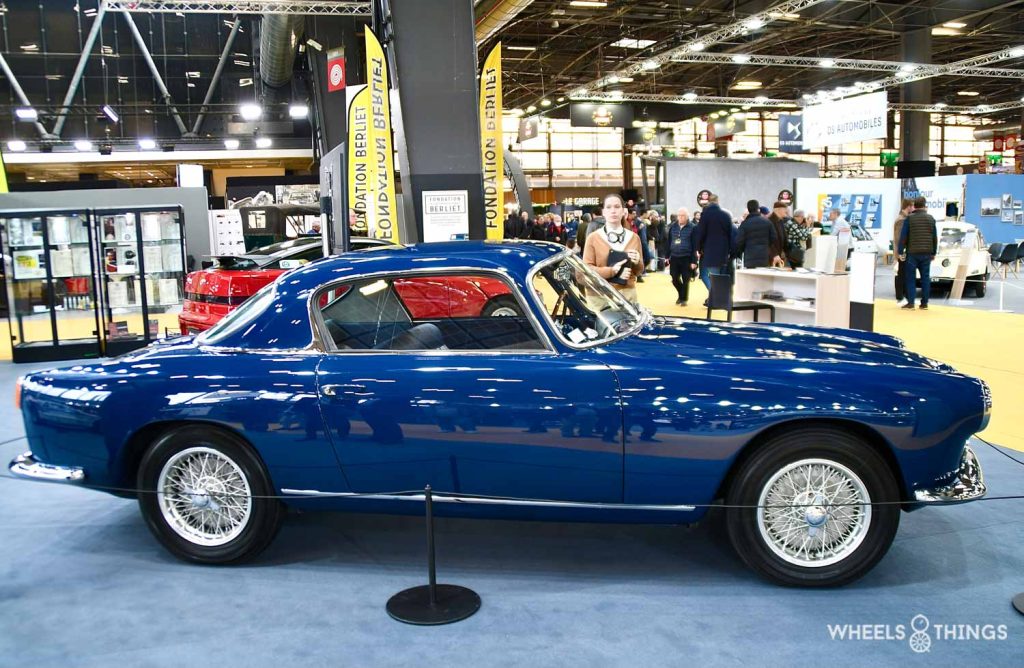
Naturally, the best material was found at the Italian colleagues with a Fiat 500 Abarth, a real Lancia 037 Martini Group B and two Alfa Romeo’s with the 1900 C SS and the very special S.Z.
THE BRITISH ARE BACK
A show without the big British Classic Car dealers is like a cake without decoration and whipped cream. After their absence due to Brexit and Covid, they were happily back with their beautiful stands.
GIRARDO & CO
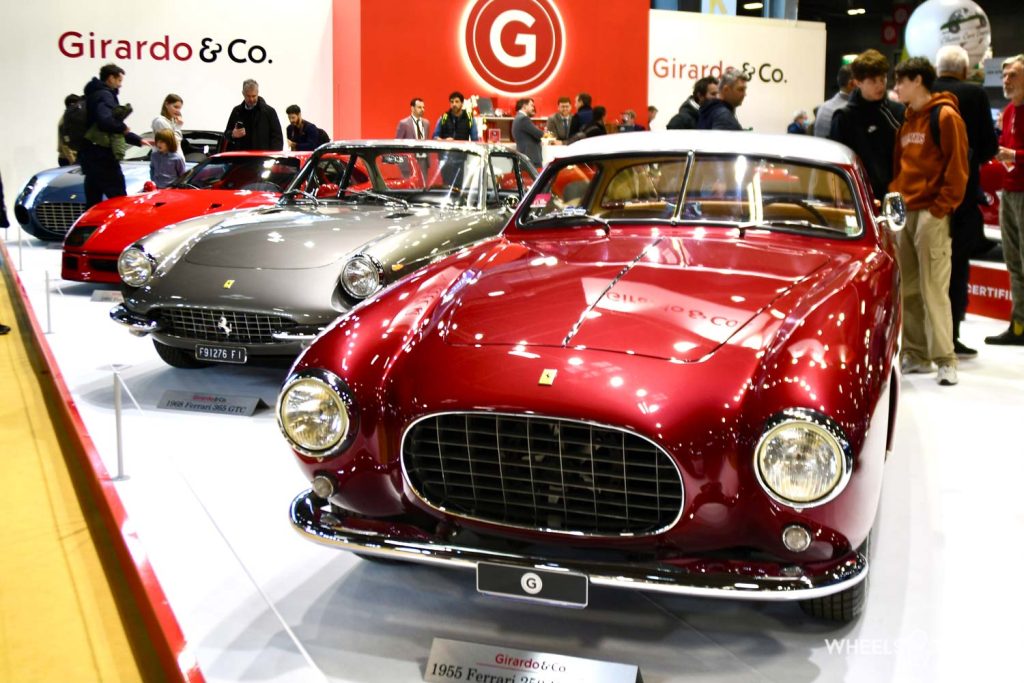
This still young company, led by former auctioneer Max Girardo, had brought no fewer than 13 very exclusive Ferraris. Naturally and to stay in the theme, several were Le Mans participants. All but one were for sale.
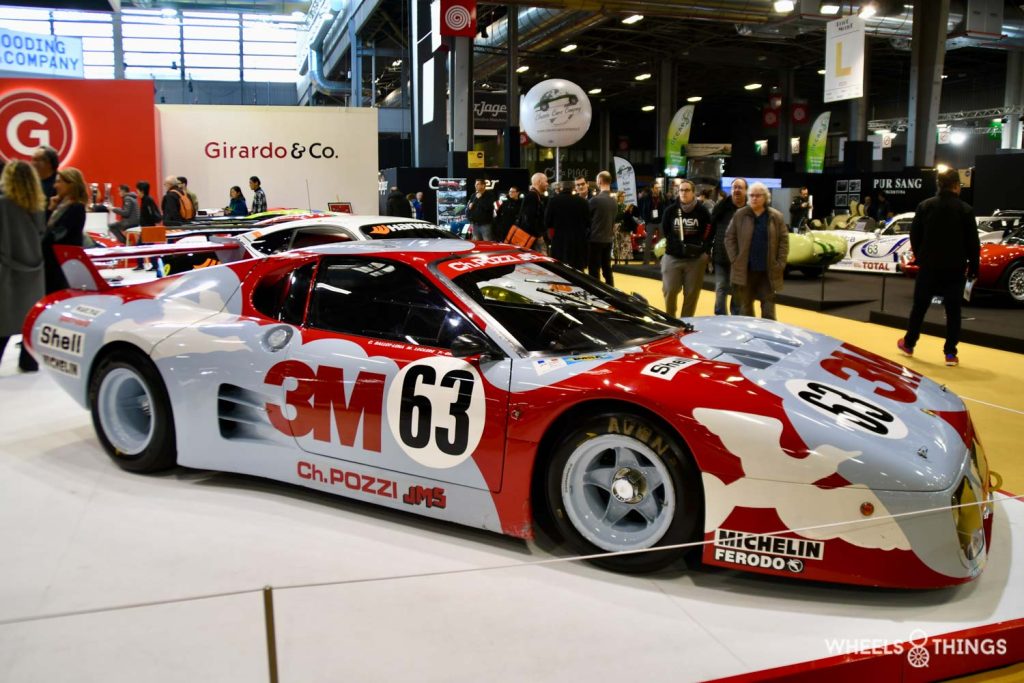
The stunning BB 512/LM with Pininfarini bodywork started in edition 79. Claude Ballot-Lena/Michel Leclère and Peter Gregg climbed to p10 in the standings after the night. An accident involving a Lola proto on Sunday morning marked the end of their adventure. The Pozzi team’s other car, with Anduet and Dini, also had to retire one hour later with a blown engine.
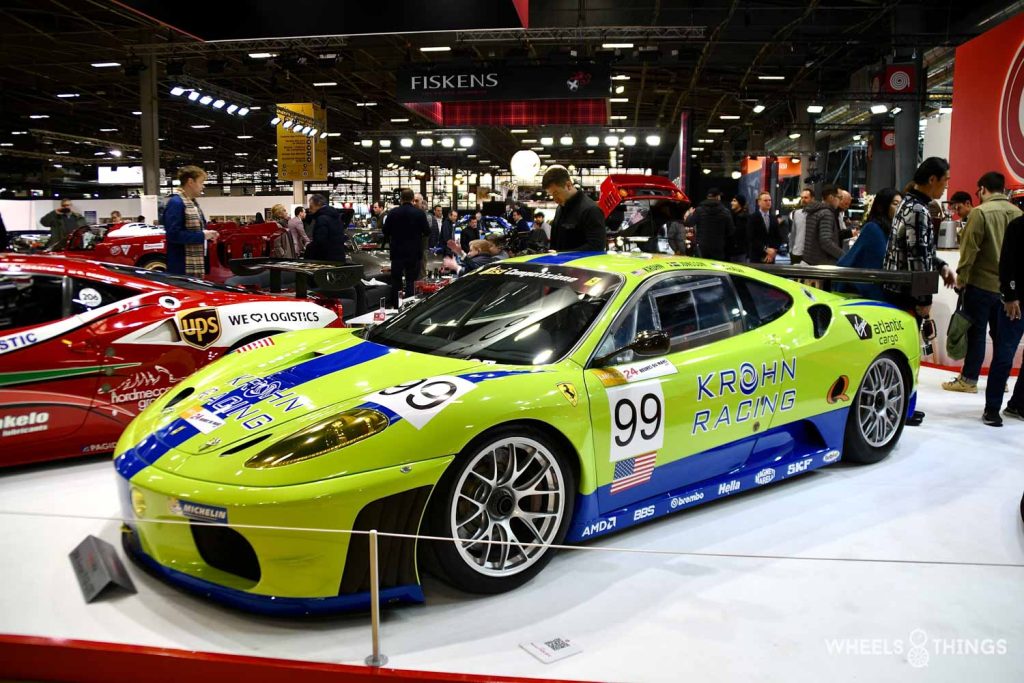
Slightly more recent material with two F430 GTC models: a first from the Krohn Racing team that finished second in the LM GT2 series in 2007. This F 430 GTC came from the workshops of Michelotti who built it for Ferrari.
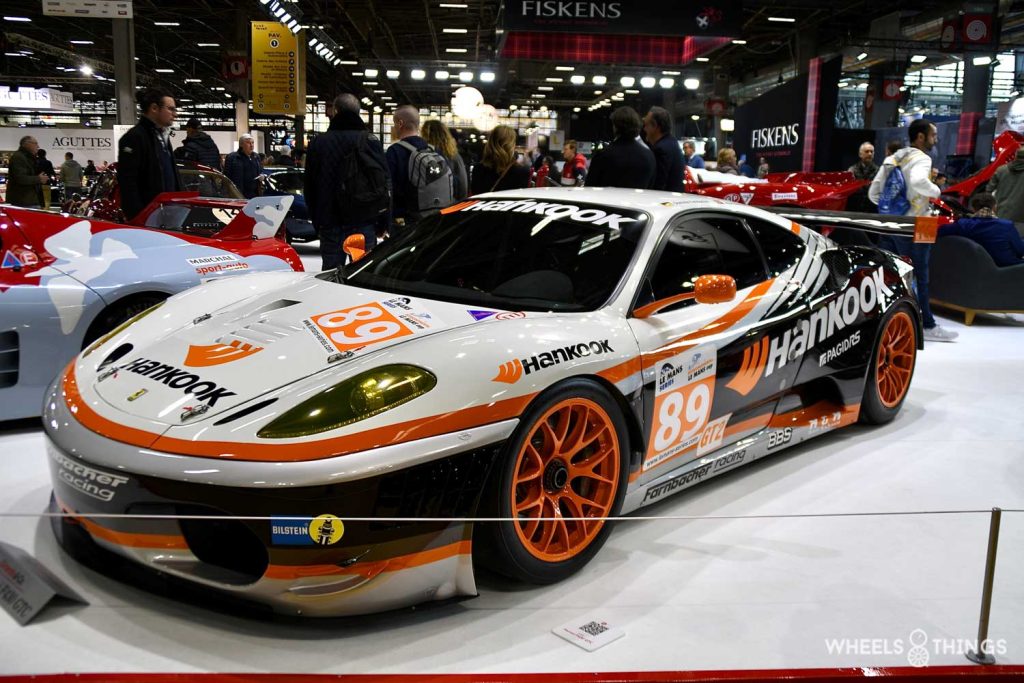
This 2010 Hankook Farnbacher did just the same and also finished second in its series in 2010. This 430 does feature “wide bodywork”. Only 10 examples of this were built and this too by Michelotti.
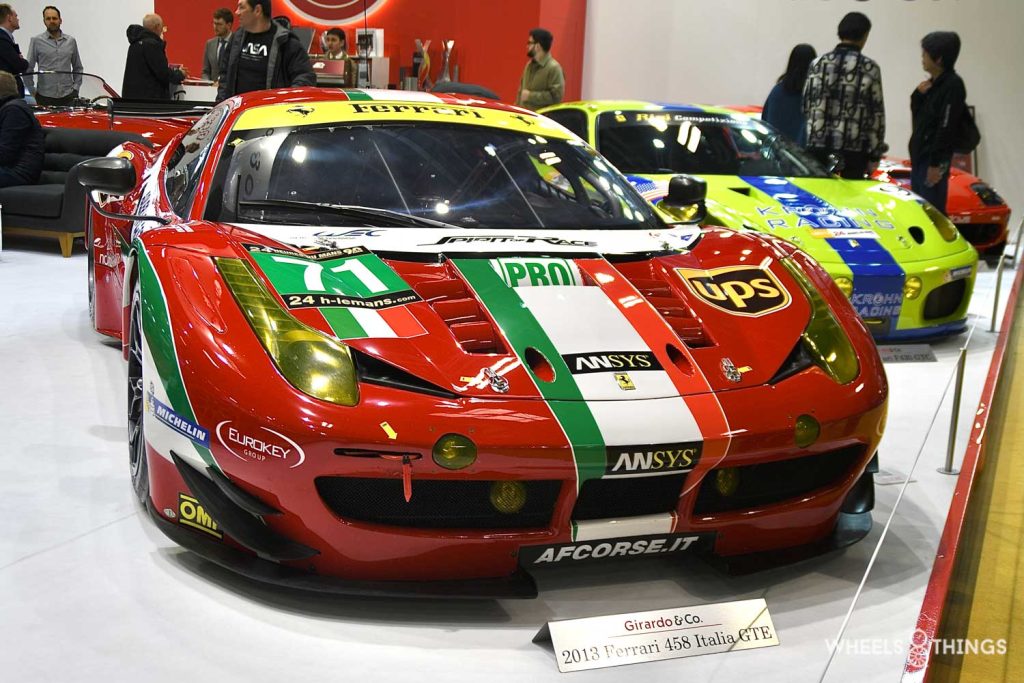
A slightly more recent version with this 458 Italia GTE. This is a double Le Mans entrant and owner of pole position in its class in 2013. Eleven examples of this 458 were built at Michelotti. This 458 was used by AF Corse’s official Ferrari team. The car is sold with racing overalls and clothing of the team.
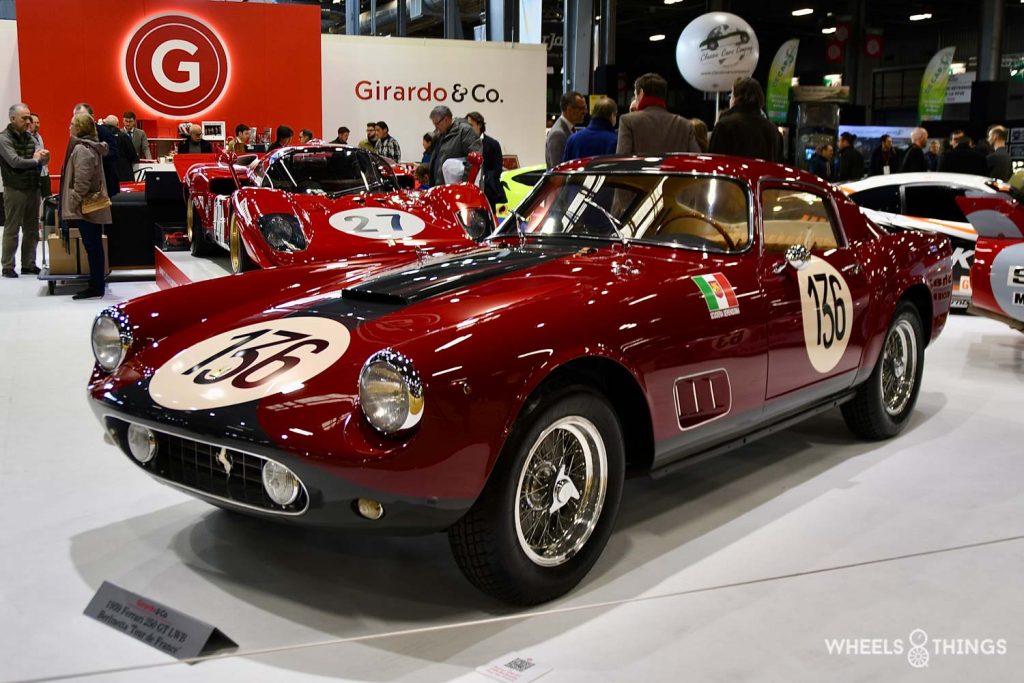
This 1959 Ferrari 250 GT LWB Berlinette “Tour de France” is slightly older but it is a beauty. And with only 36 built, this is still a very unique piece.
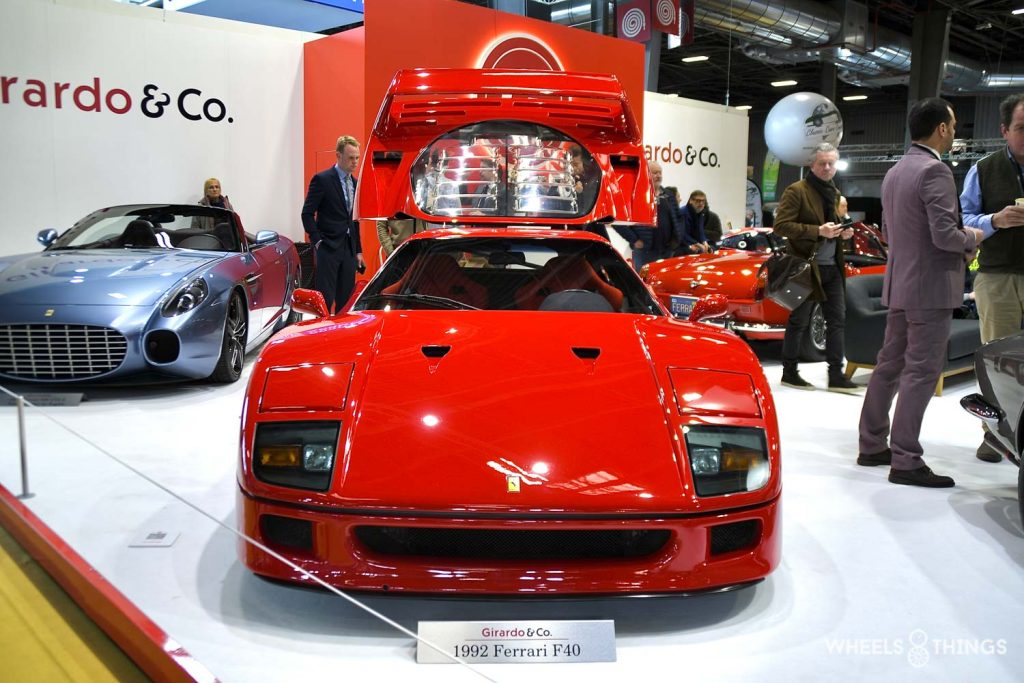
Of course, there were also track versions with an F40 with only 749 km on the clock and a beautiful 400 Superamerica SWB Coupé.
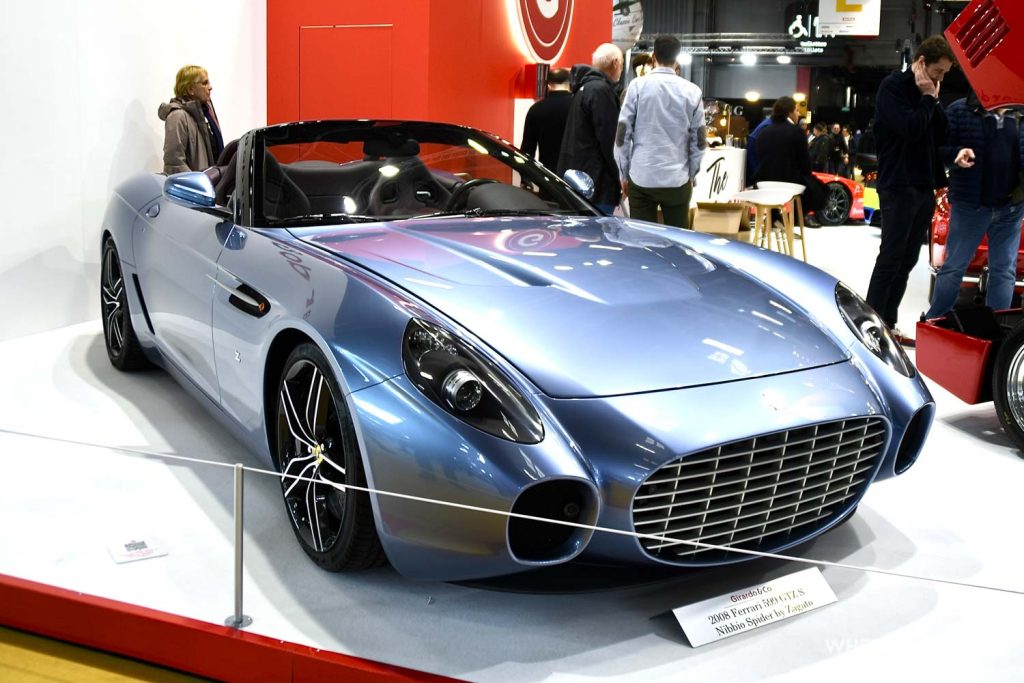
And Zagato also did its bit with this 599 GTZ S Nibbio Spider. One of six Zagato converted 599 GTBs and the only one with a manual gearbox. And as strange as it sounds: with the new cars, there is an almost complete shift to automatic gearboxes, and with the classic automobiles, the prices of these with manual versions are rising sharply. Now yes, Zagato: you’re either a fan or you’re not.
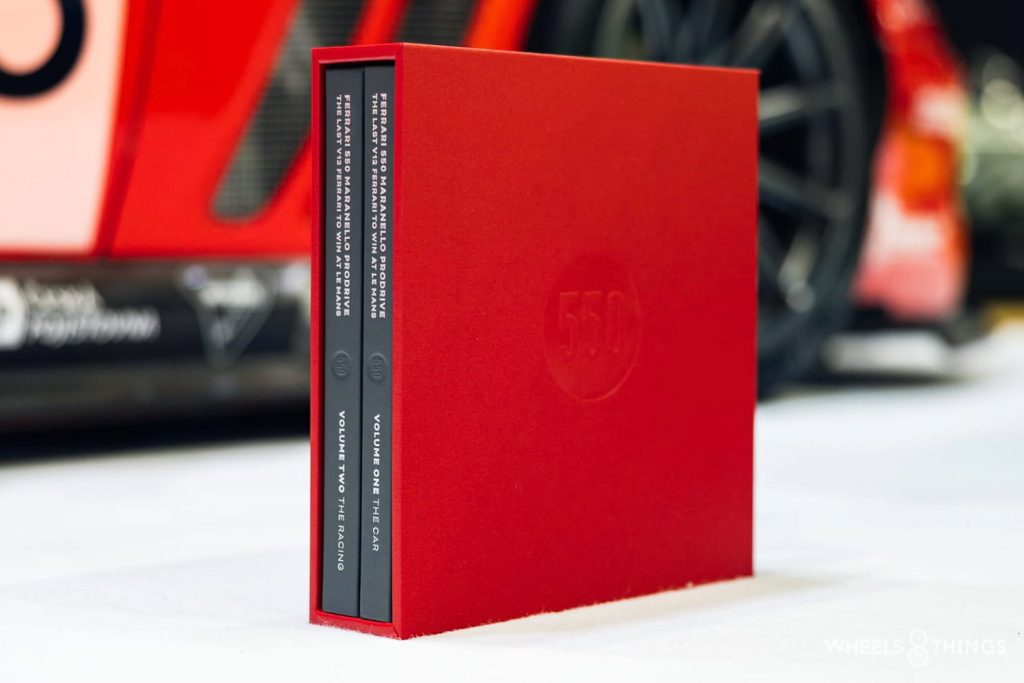
Girardo also took the opportunity to introduce their long-awaited book on the Ferrari 550 Maranello Prodive GT1. After five years of research and collecting all the data, it was finally ready. In collaboration with Ferrari specialist DK Engineering and Ferrari historian Keith Bluemel, a 590-page book was produced that starts with the design of the car, its development, all the races, the 12 race cars built and finally where and with whom they are now. It can safely be compared, in terms of level and finish, to the Mclaren F1 GTR book from at Porter Press that you can discover here.
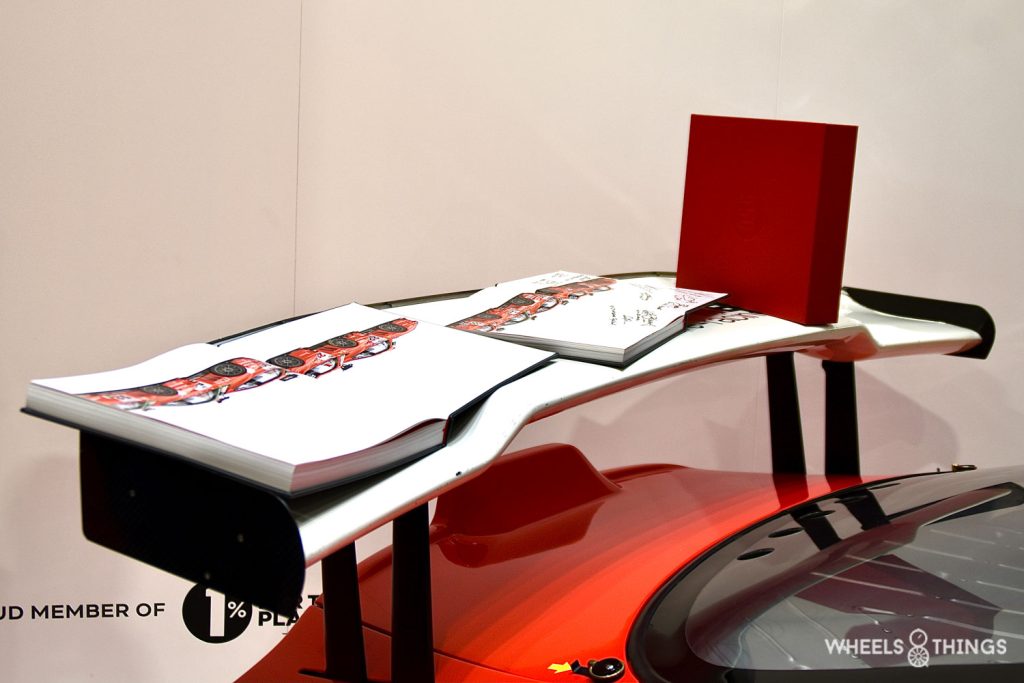
The work is divided into two volumes and comes in a slipcase. With an edition of 550 copies, being quick is the message. The book lay for perusal on the rear wing of the 2003 Le Mans GT1 winning Maranello. How original can you present something.
FISKENS
Next to Girardo’s stand we encountered Fiskens’ equally spectacular stand. No Ferraris at Fiskens but they do have a very varied range.
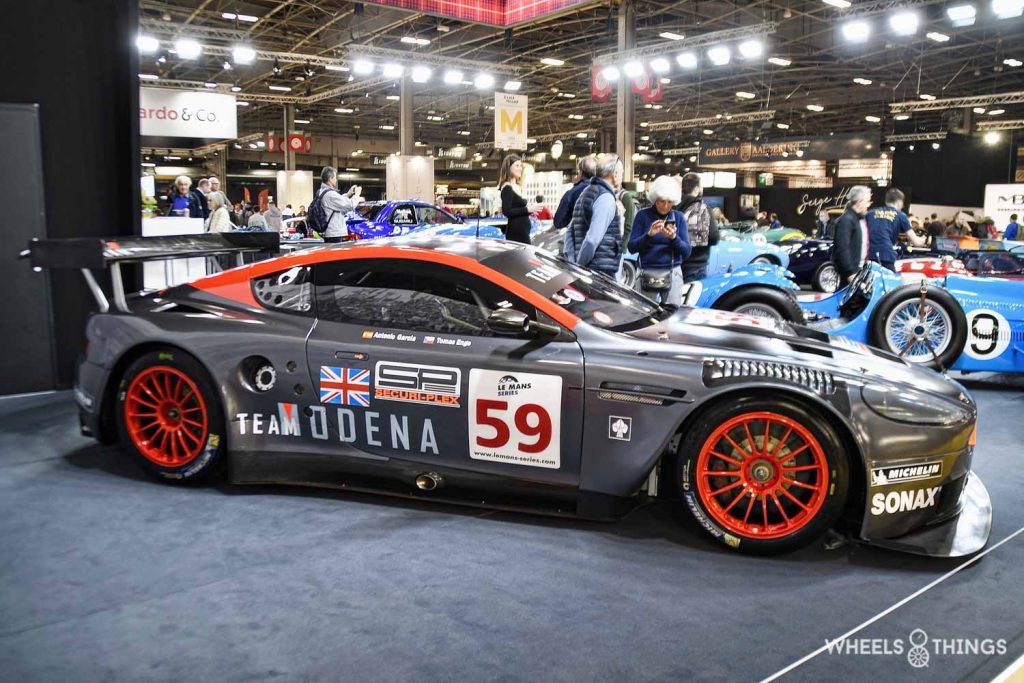
This Aston Martin DB9R GT1 is the first customer chassis sold by Prodrive. This number 101 was run by Cirtek Motorsport, on behalf of its owner, between 2005 and 2008. 101 name participated in the FIA Championship, the Le Mans Series and, of course, the 24 Hours of Le Mans. Their best result came in 2006 when they fell just short of the podium with fourth place.
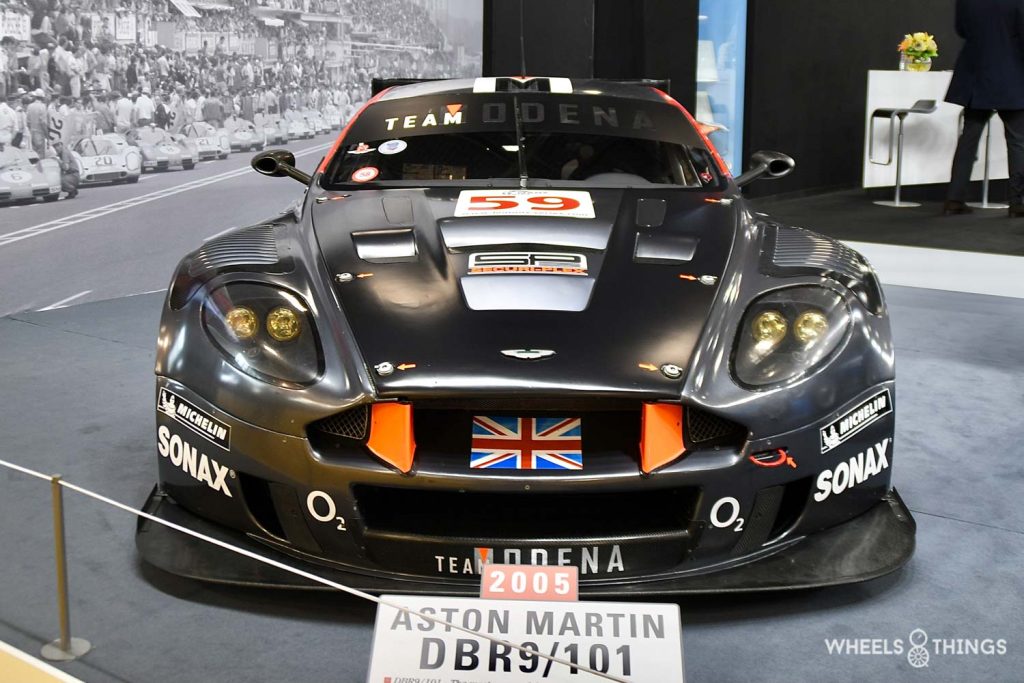
They did win the Milhas in Brazil that year with father and son Piquet behind the wheel. 2008 was their peak year: Antoinio Garcia and Thomas Enge then won the Le Mans Series races at Monza, at the Nürburgring and at Silverstone. The car is also currently for sale in the 2008 configuration.
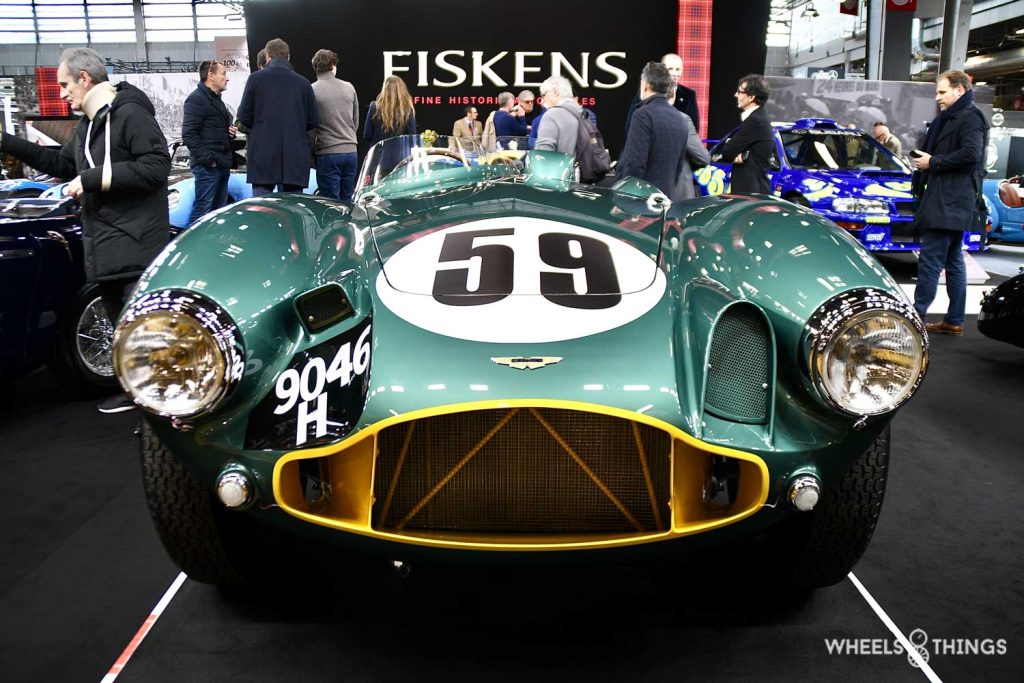
Still Le Mans material with another Aston Martin, but slightly older than the previous one, DB3S/5. A factory Aston Martin car, in British Racing Green of course.
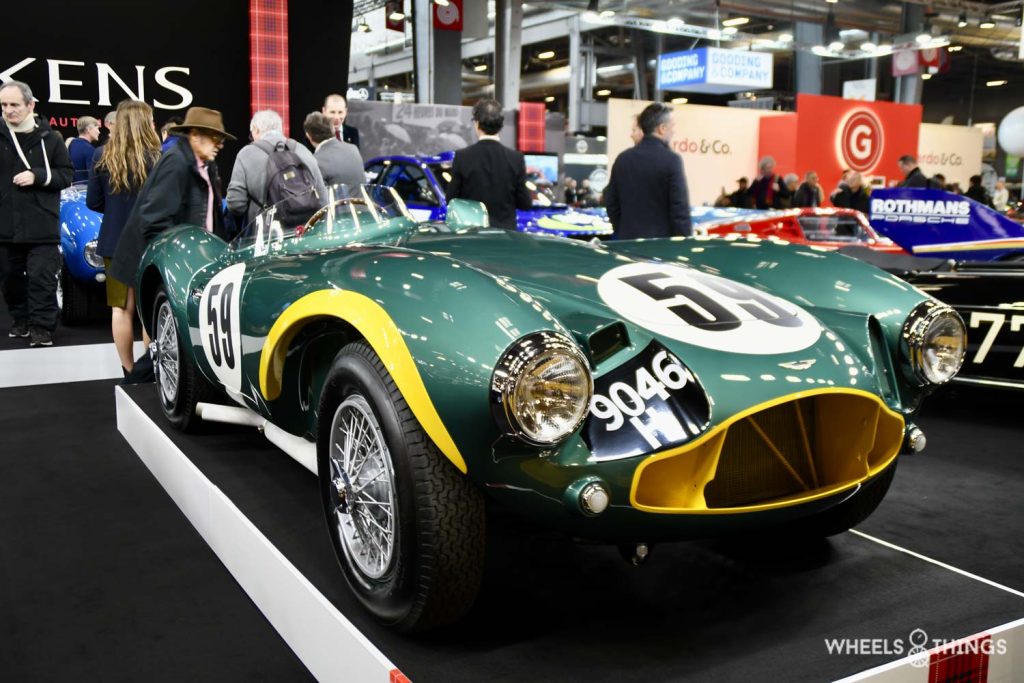
Sir Sterling Moss was once at the wheel and took victory with it at Goodwood circuit. Besides its racing career, this Aston also appeared on the silver screen in the film “School for Scoundrels”. The car underwent a complete restoration at Aston Martin in 2014 and was best in class at Pebble Beach last year.
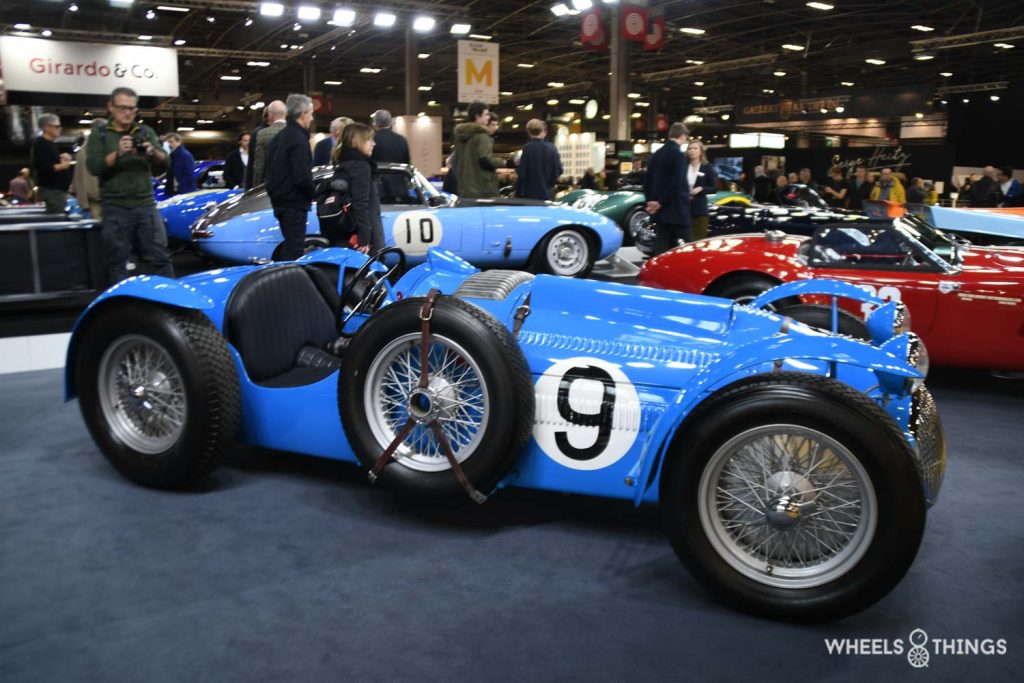
This 1939-built Talbot Lago T26 GS debuted just before World War II, but its greatest successes did come after the war with a win in the Grand Prix de l’ ACF in 1948. The Talbot also competed four times in the 24 Hours of Le Mans with a second place as its best result in 1951.
Apart from the British, other major players were of course also attending.
KIDSTON
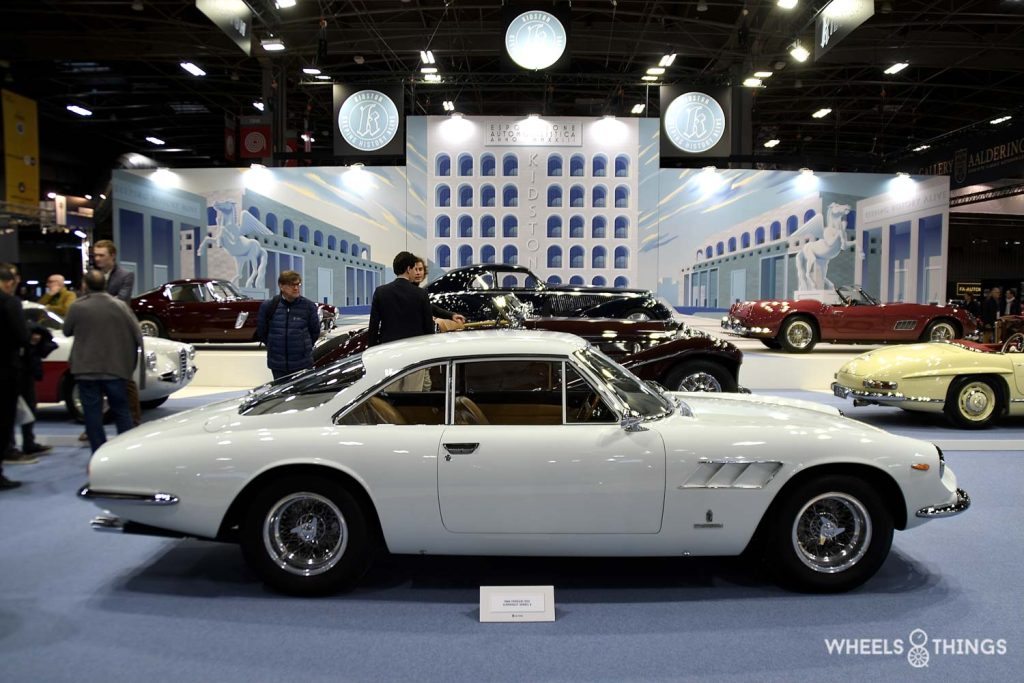
We start with a half-British, half-Swiss: Simon Kidston, the Brit who emigrated to Geneva to pursue his business activities there. Last year, Kidston saved the Rétromobile show with his presentation of seven Mclaren F1s. Many exhibitors were not attending then and the Mclaren expo was a bit of the saving grace of Rétromobile. You can find all the info on these F1s here.
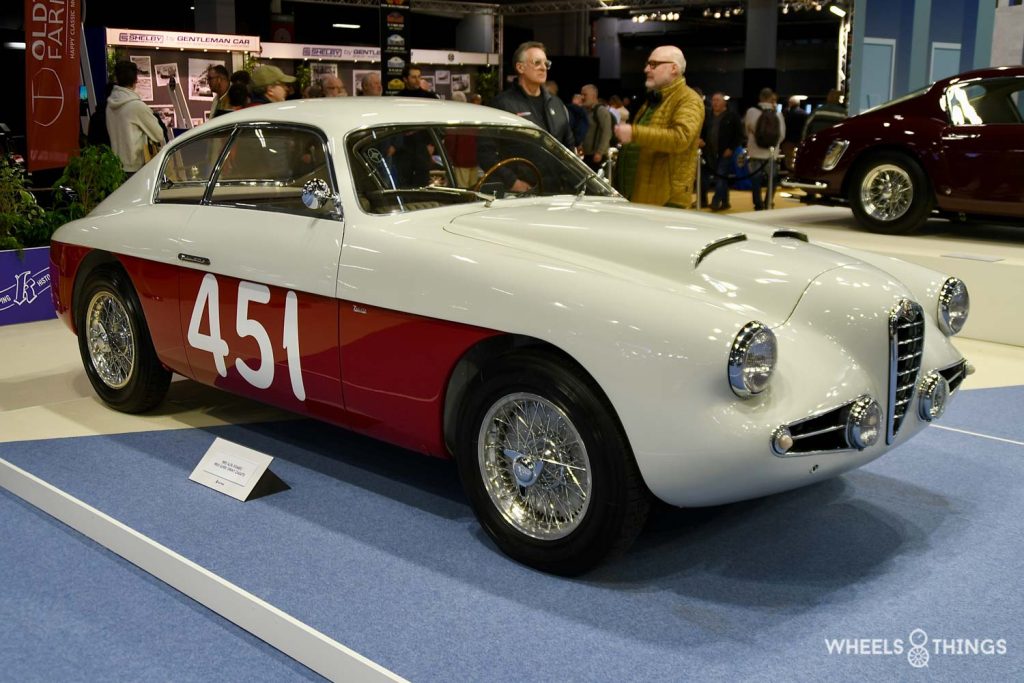
No supercars this year but the nine cars presented still made for one of the most beautiful stands of the show. The Kidston stand did not have any cars with Le Mans history. The only one with racing genes was the 1955 Alfa Romeo 1900 SS Zagato. This red/white Alfa was once delivered new to Italian chocolatier Vittorio Vanini and who immediately took part in the Mille Miglia with it. With 19th place out of 661 participants, this was also a fine performance.
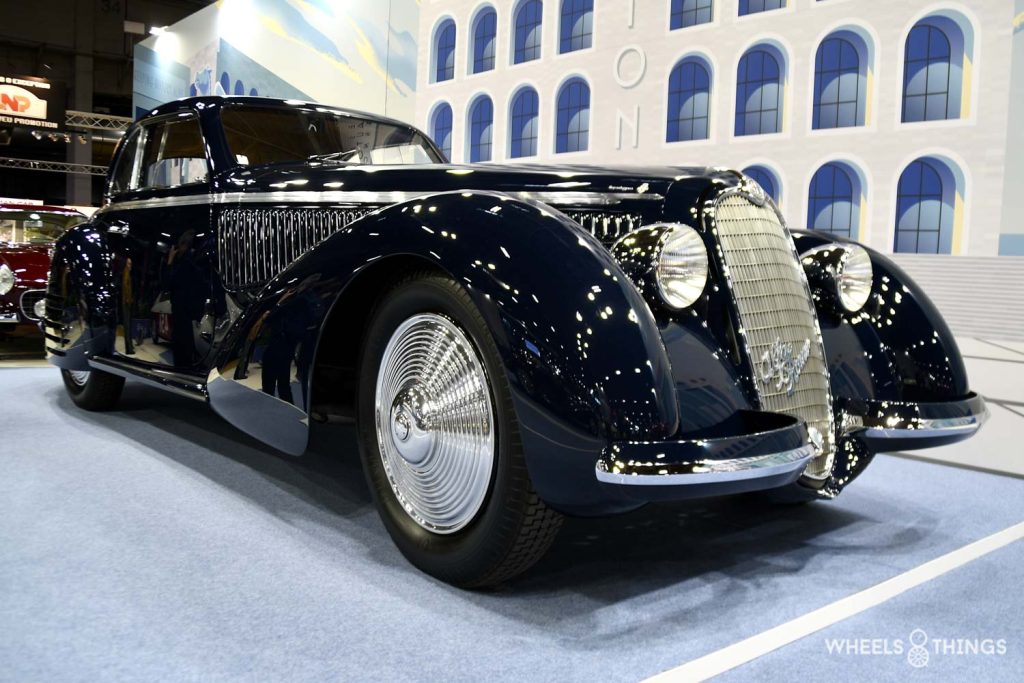
Seven of the nine cars presented were of Italian origin and the oldest was this pre-war Alfa Romeo 8 C 2900 Berlinette Touring.
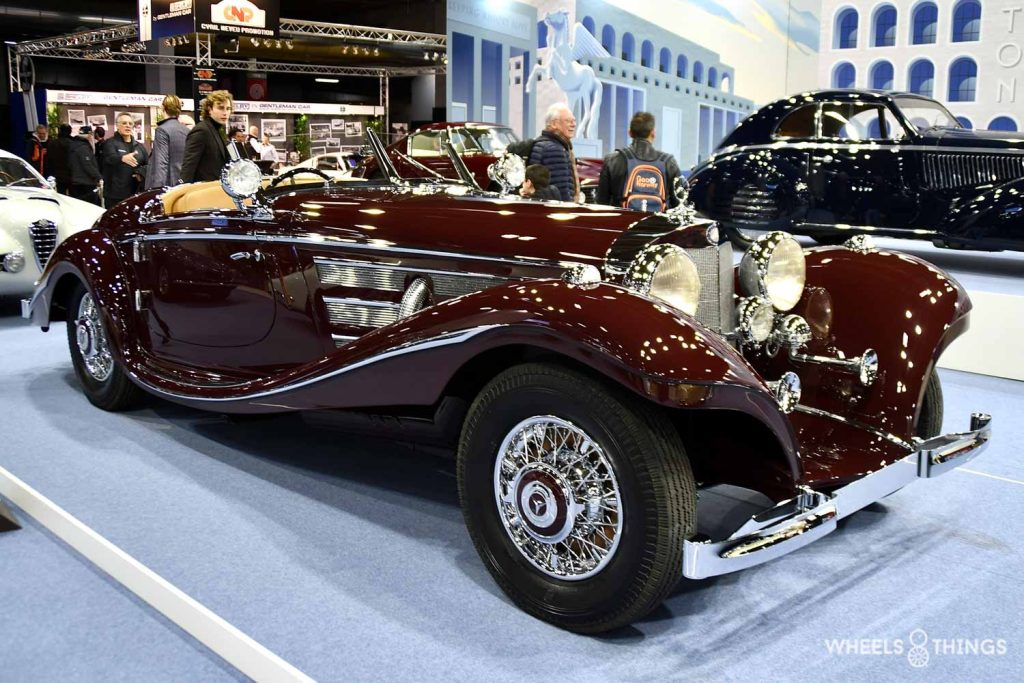
Still pre-war but of German origin: the 1937 Mercedes 540 K Special Roadster.
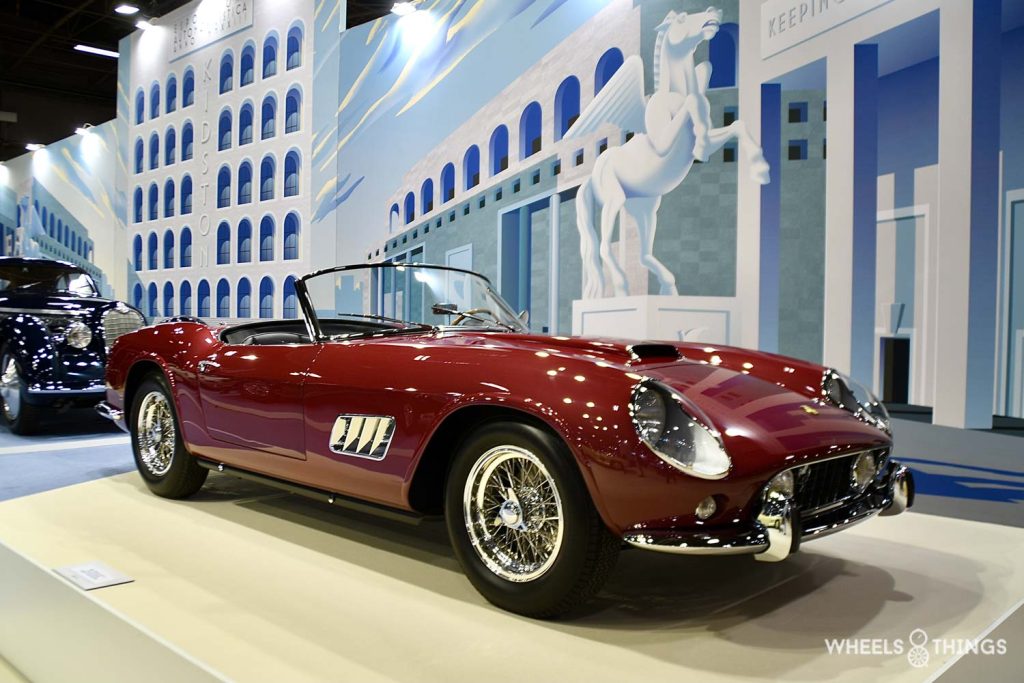
More fine material with this Ferrari 250 GT SWB and 250 GT LWB Calfifornia Spider Competizione
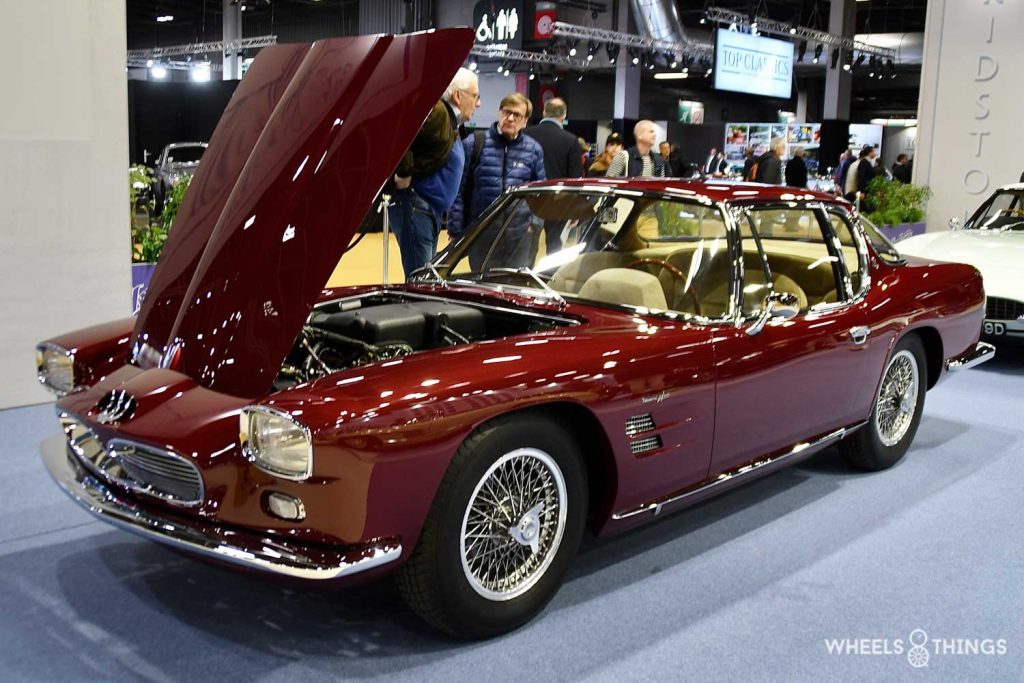
Those looking for a Maserati 5000 GT with bodywork by Frua even had the luxury of choosing the colour and could opt for a burgundy red or a grey one.
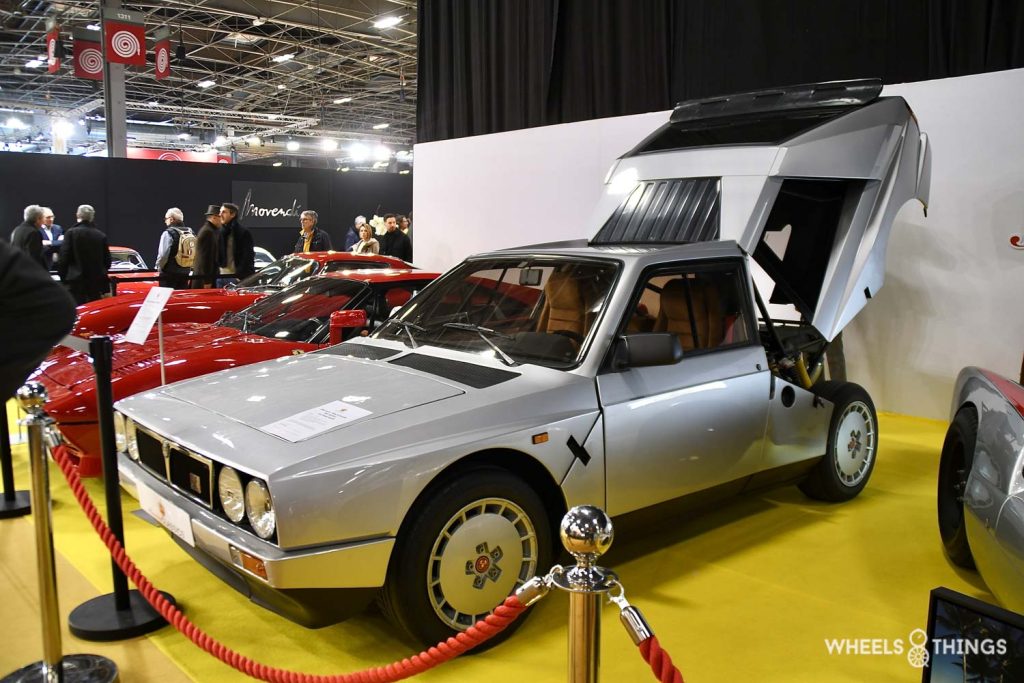
And we may be repeating ourselves, but we’ll say it one more time: at Rétromobile, you see cars you won’t see anywhere else, like this street version of the Lancia Delta S4. This Group B homologation model was built in 200 copies and is very rare. You are many times more likely to see the rally version than the series model. For us, this was also the first time!
LUKAS HÜNI
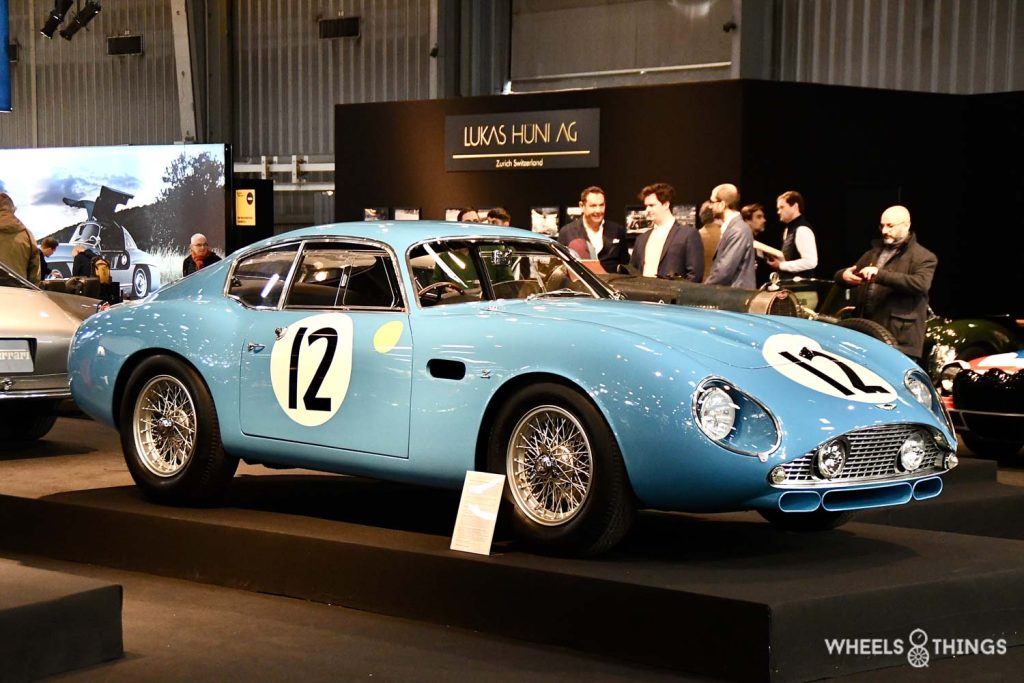
Hüni was also back with its immensely large stand. A little less competition-oriented than the others, but lots of beautiful and exclusive cars like the Aston Martin DB4 GT Zagato.
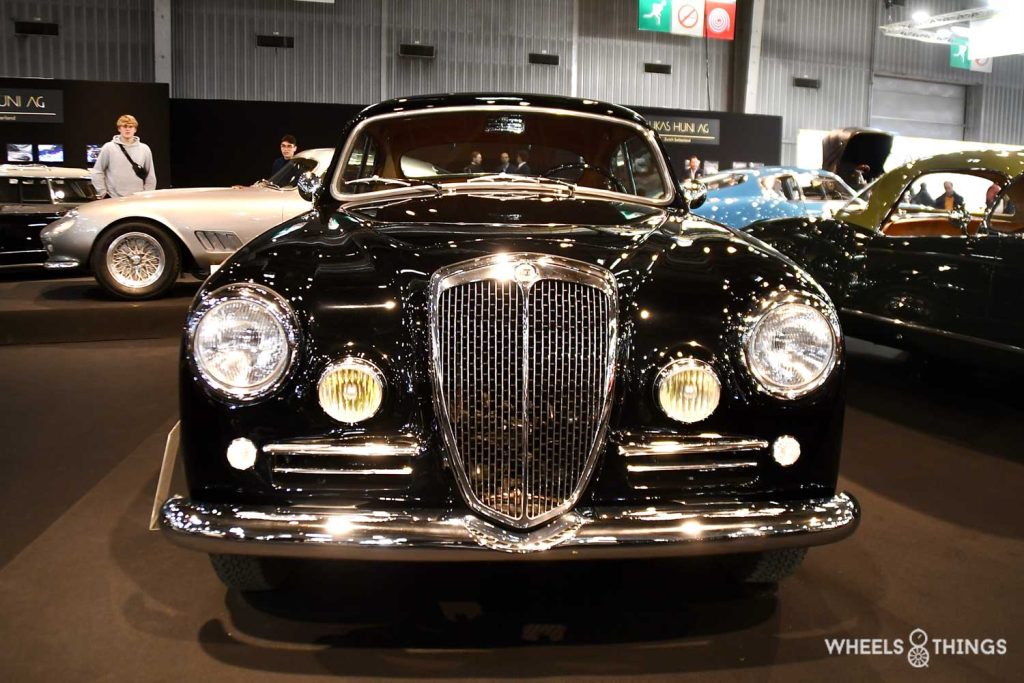
And some Lancia Aurelia’s and they are really beautiful things.
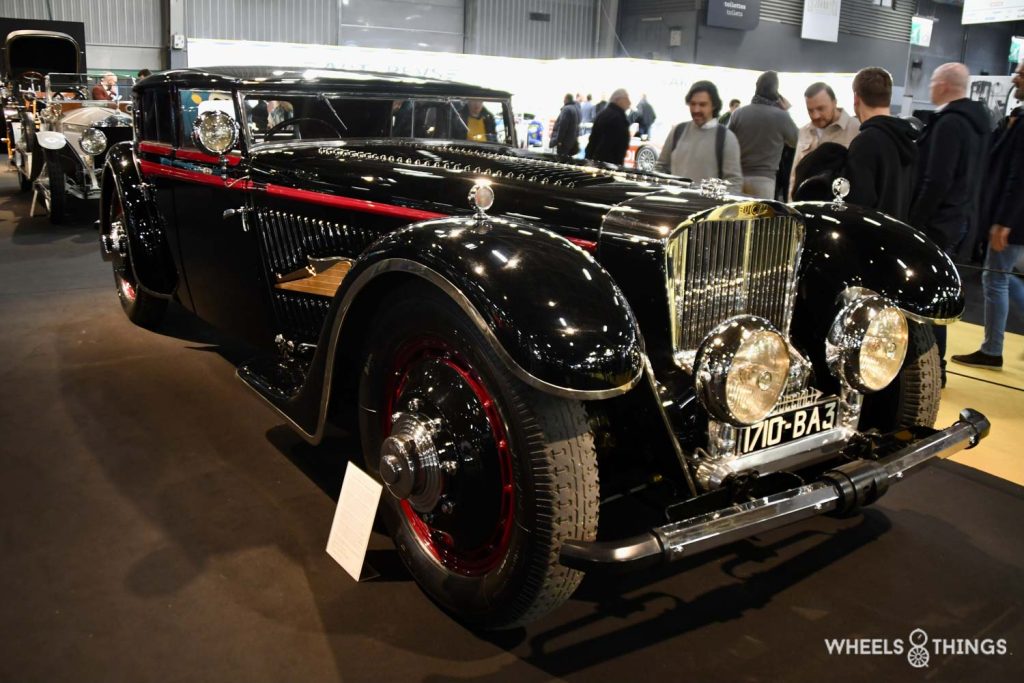
Surely a this Bucciali is really rare. Not many were built and the exact numbers are not known either. Bucciali built cars in France between 1922 and 1933. This example is said to be one of a series of three survivors.
AUTO MOTO TF 1
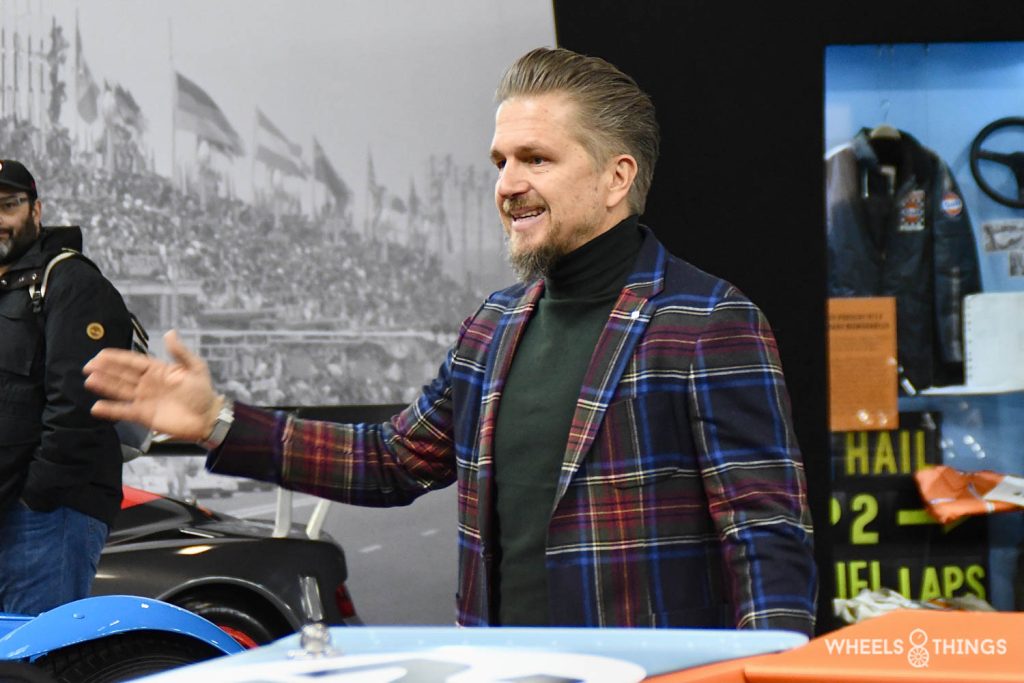
Rétromobile is a fair with a certain standing that generates a lot of media attention in France. So on Wednesday morning, we saw the team of the car programme “Auto Moto” recording for the broadcast on TF1. Auto moto is a car and motorbike programme now in its 48th year. It presents a diverse range of both new and classic cars and motorbikes. Highly recommended every Sunday morning around 10 am. Presenter Jean Pierre Gagick, like us, was looking for all the beauty that Rétromobile exhibited this year.
LONDON – BRIGTHON
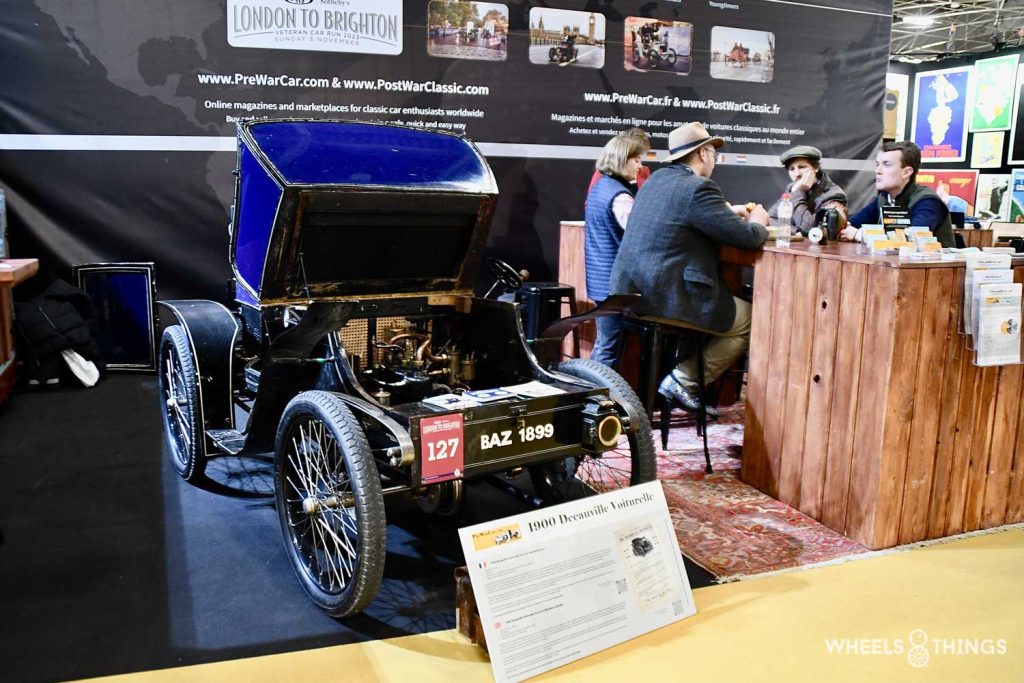
Needless to say, there were other themes besides the centenary of the 24 Hours of Le Mans. For the first time, we saw the team behind the organisation of the London to Brighton Veteran Car Run. You can participate, with cars from 1905, on the first Sunday in November. These old tuffers start right after dawn for a 54-mile drive along the old A 23, which doesn’t seem like much but the reality is totally different.
VAN LIFE
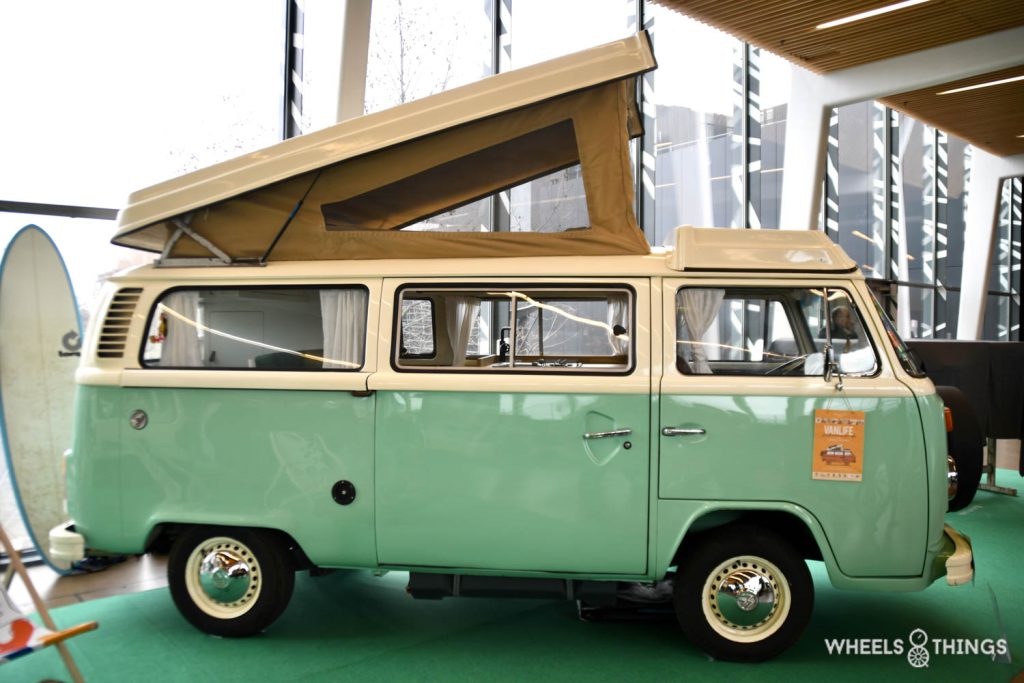
On the transit bridge between Palace 1 and 2, there is also traditionally a themed expo every year. This year it was: Of Life which featured world travellers with their VW vans. But it wasn’t just VWs we encountered. We saw a diverse range of cars with caravans and converted vans and even already quite large vans used for this purpose.
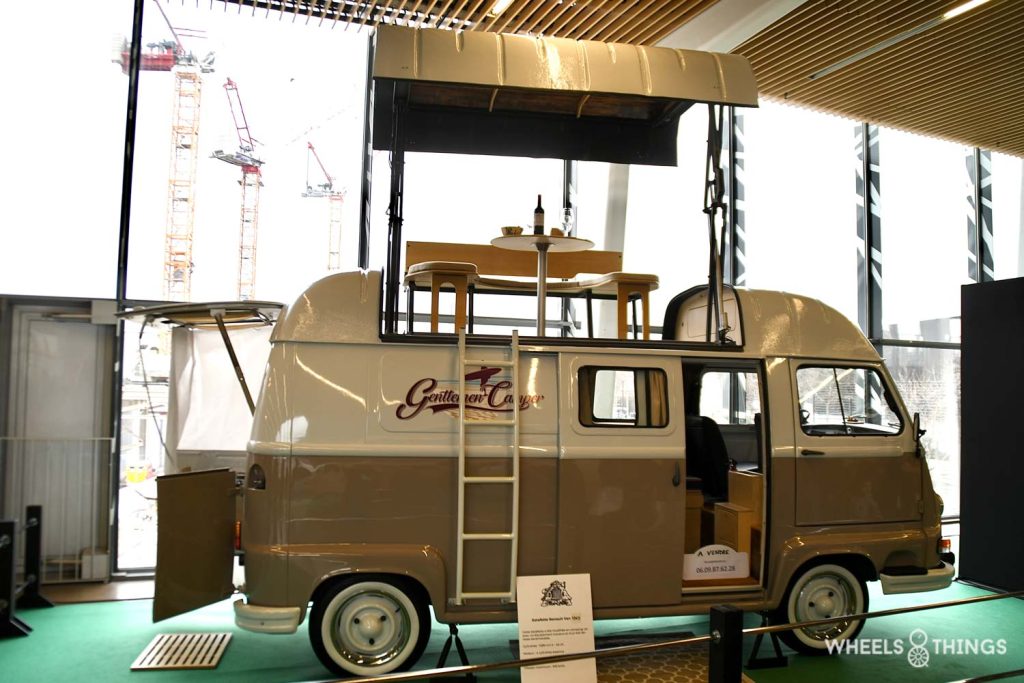
In addition to the driving material exhibited, there were also talks by “world travellers” who told their stories of their circumnavigations, which could sometimes last up to two years, in all colours and scents. Fascinating stories!!!
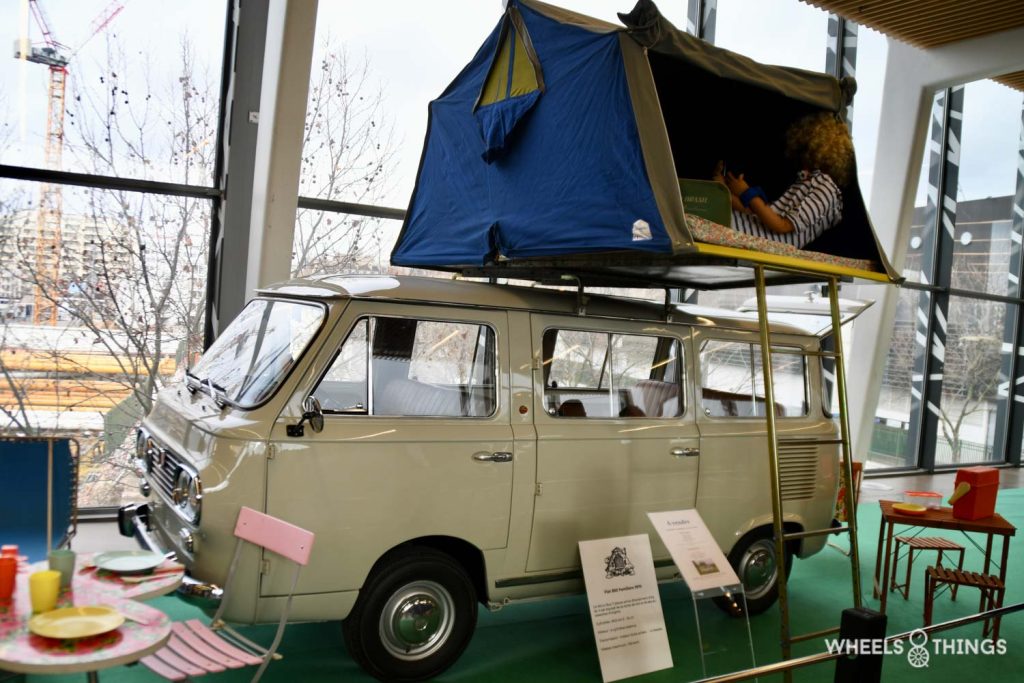
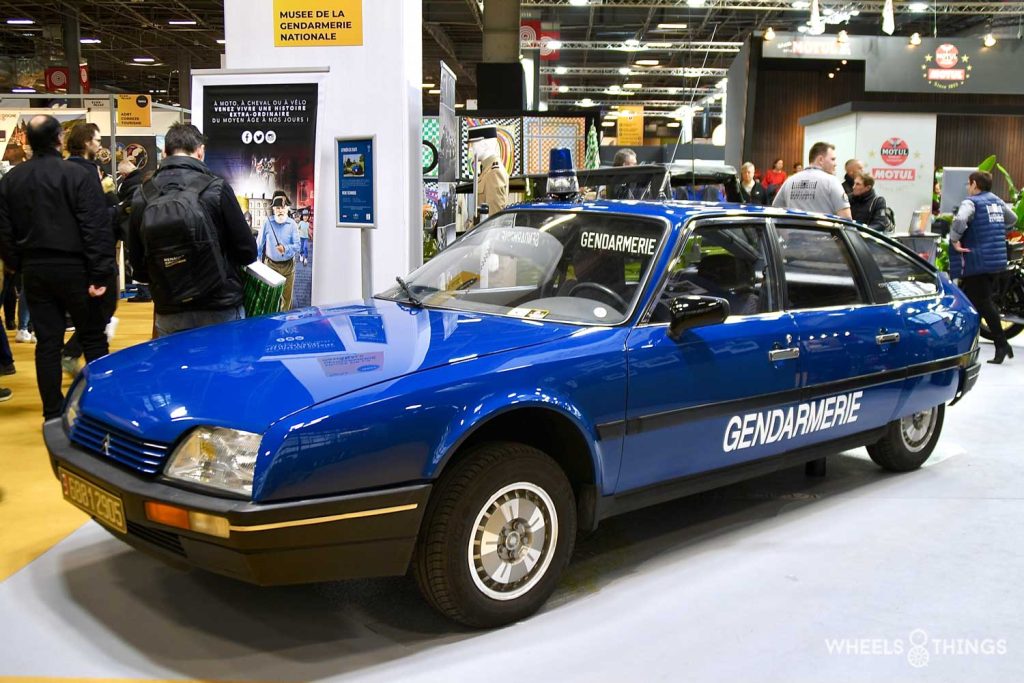
GENDARMERIE
Last year, the foundation that manages the mobile patrimony of the French Gendarmerie attended with a fairly large collection. This time it was much more modest with this Citroën CX GTI intervention car.
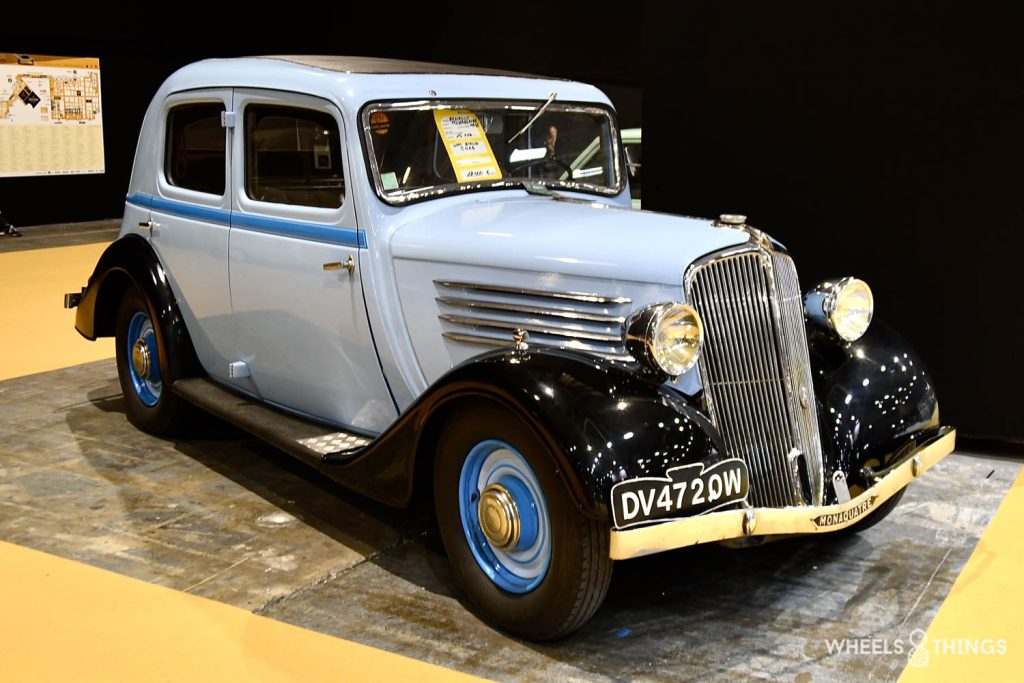
And there were not only very expensive cars at Rétromobile. The concept with a hall with cars under 25,000 euros was kept this year too. And say it yourself: 12,000 euros for this 1935 Renault Monoquatre is not really excessive, is it?
MUSEE DES BLINDES
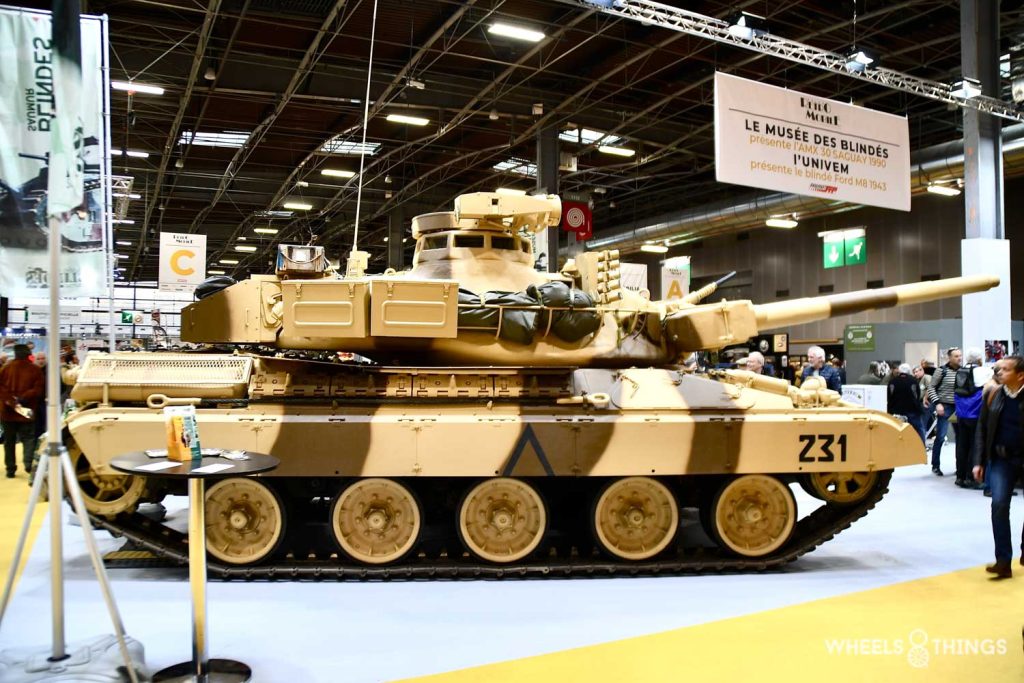
Closing we do with the heaviest material of the fair. The Musée des Blindés was also back with some of their showpieces. On their stand a very impressive AMX-30 tank that was in French army service between 1966 and 2011. This 36-tonne hulk reaches a top speed of 65 km per hour and has a range of 600 km and is equipped with an 80 mm and a 20 mm cannon. Among other things, it was used in the Gulf War.
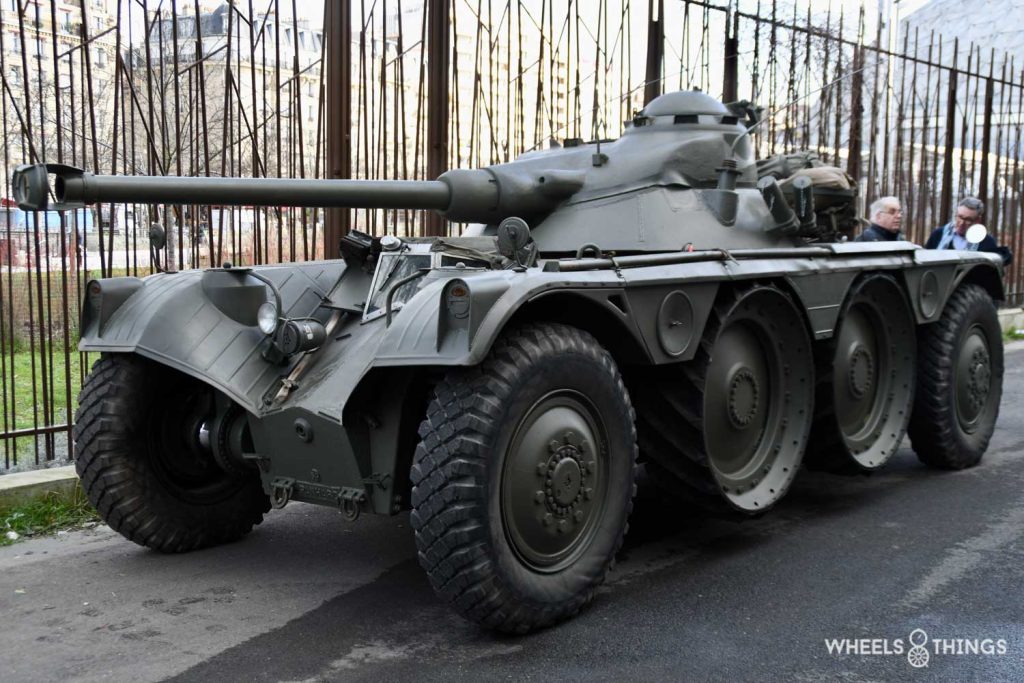
In the car park, at regular intervals, demonstration rides were given with an EBR Panhard. This Panhard has an air-cooled V12 petrol engine and reaches a top speed of 105 km. The design dates back to before World War II but the execution only came about after the war. Production started in early 1950 and 1,200 examples of this model were built, intended mainly for reconnaissance missions.
Rétromobile was again the top fair as we have always been used to, except for last year. There was so much beautiful material on display that one day of the fair was not even enough to see everything in detail.
It is as the French say so beautifully: Rétromobile – c’est incontournable – and this time they are absolutely right. More than 100,000 visitors came to see all this beauty and the absentees were wrong this time.
So we will return to this fair soon with a top 10 of the most beautiful cars we came across. Yes there are still some! Richard Mille was also back there. A report on this too will follow.
The auctions of Artcurial and Bonhams also worked overtime with several auction days and also very beautiful cars. We will report on these as well.
See you soon.
